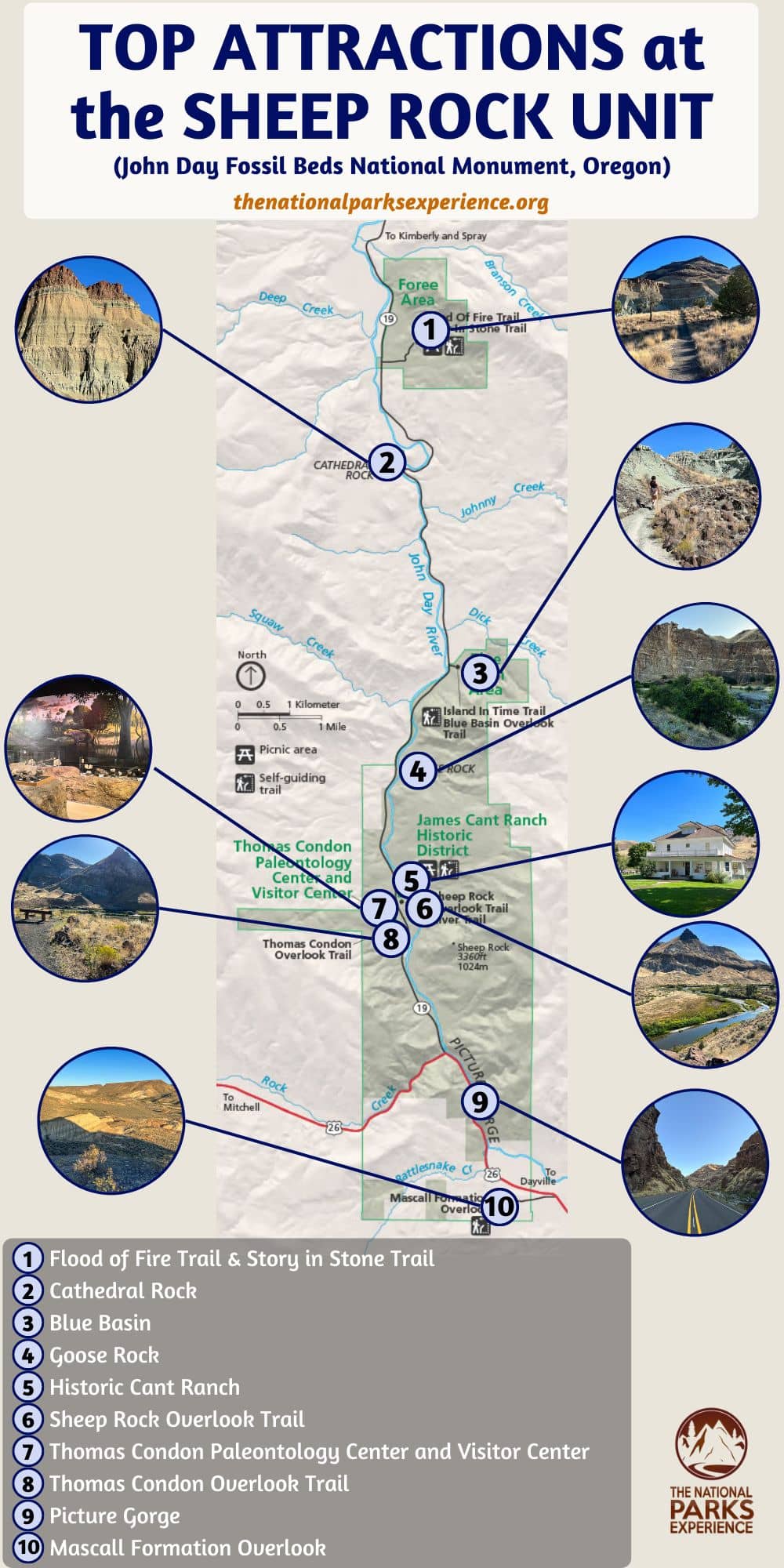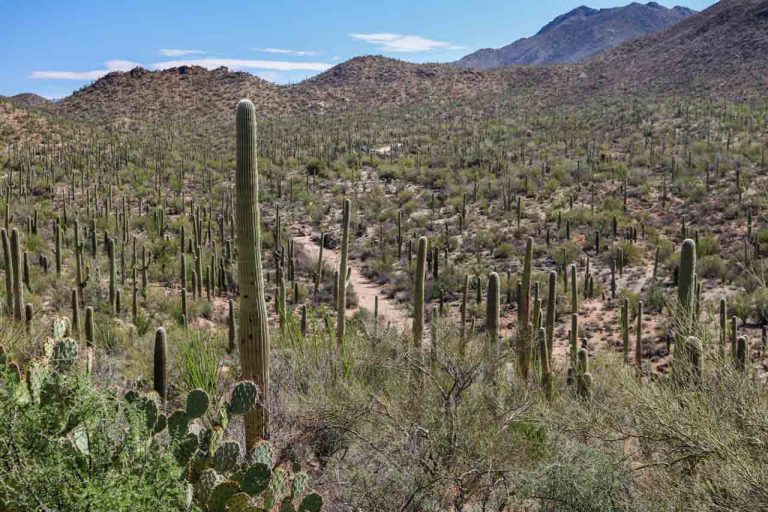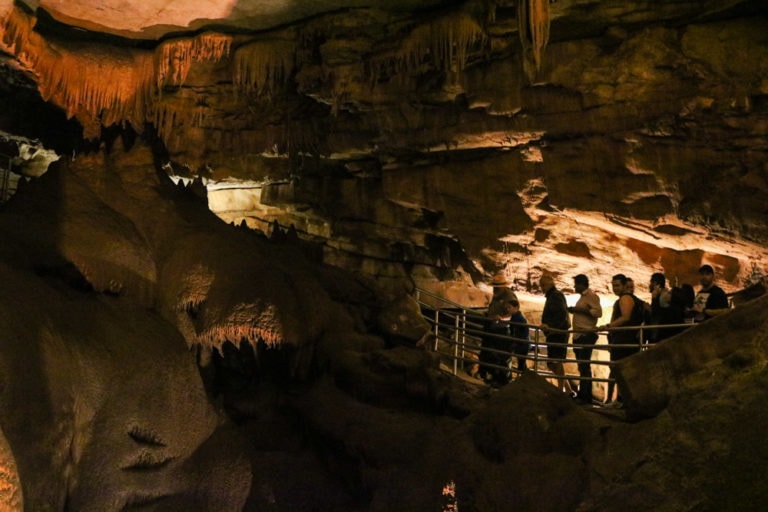What to See and Do at the Sheep Rock Unit (John Day Fossil Beds National Monument)
Although less known than the popular Painted Hills Unit, the Sheep Rock Unit is the largest of the three units that make up John Day Fossil Beds National Monument, Oregon.
It is the heart of this fascinating national monument, home to striking rock formations, fossil-rich geological layers, beautiful riverside scenery, several great hiking trails, a historic ranch, and the superb Thomas Condon Paleontology Center.
It’s especially known for its “amalgam of colorful strata and complex geology,” as the National Park Service puts it so eloquently. “From Cretaceous conglomerates to the flood basalts, the geologic features in this portion of the monument are a spectacle to behold,” the agency says.
This is all to say that there’s a lot to see and do at the Sheep Rock Unit. Below, you’ll find an overview of my recommended activities and attractions, based on my own visits to this beautiful park in the High Desert of central Oregon.
In fact, when visiting the nearby Painted Hills, it would be an absolute shame to skip the Sheep Rock Unit. You really do need to visit both—and preferably also the third Clarno Unit—to get a full understanding of how special John Day Fossil Beds National Monument actually is. I strongly recommend dedicating two to three full days to exploring the park.
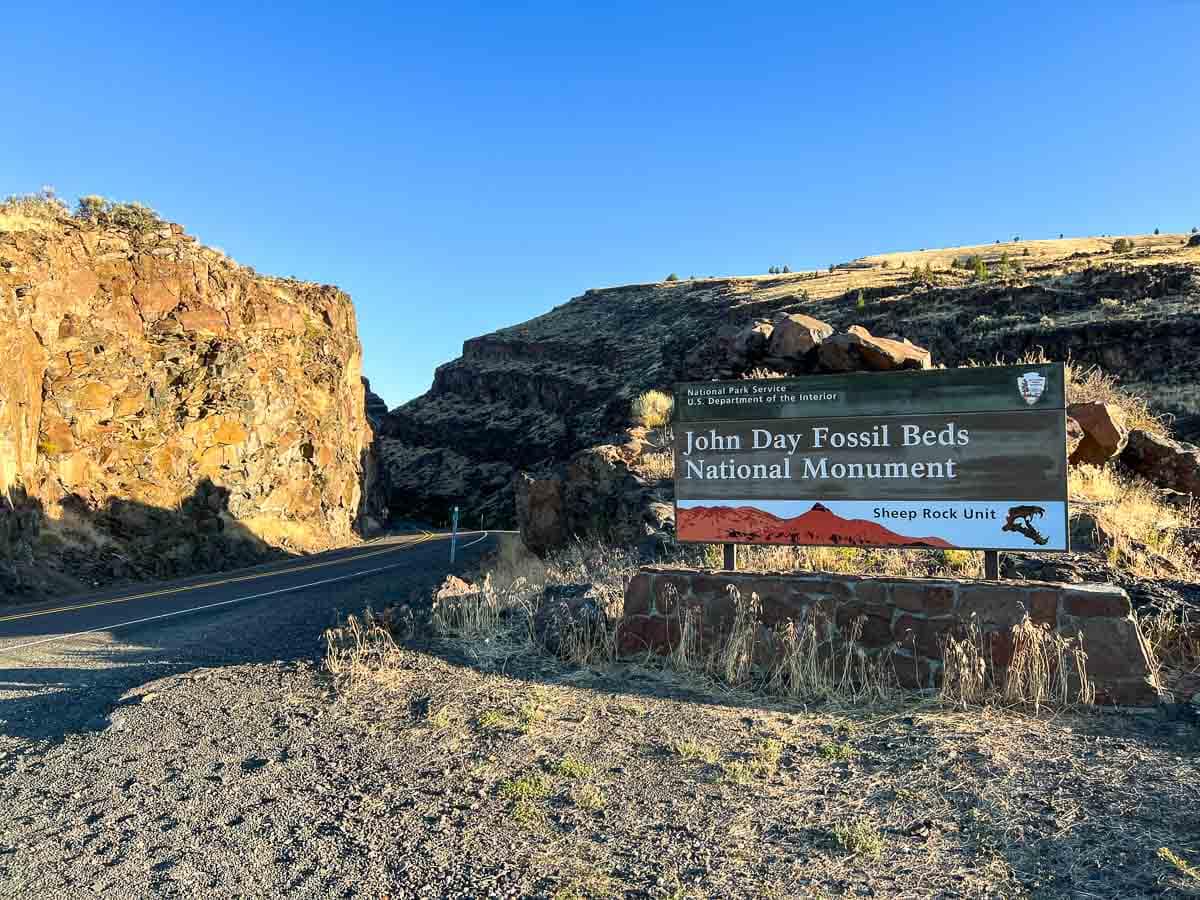
The Ultimate Guide to the Sheep Rock Unit (John Day Fossil Beds National Monument)
We’ll start this guide to the Sheep Rock Unit of John Day Fossil Beds National Monument with an FAQ section. After some essential visitor information, there’s a comprehensive list of the best things to do at the Sheep Rock Unit.
Additionally, you’ll also find a number of maps throughout this blog post, hopefully providing you with a better geographic understanding of this unique place—and helping you plan your own visit a bit better.
This blog post about the best things to do at Sheep Rock Unit of John Day Fossil Beds, contains affiliate links. You can read more about our Terms of Use / Disclosure here.
FAQs About Visiting Oregon’s Sheep Rock Unit (John Day Fossil Beds National Monument)
Where Is the Sheep Rock Unit Located?
The Sheep Rock Unit is the largest of the three units of John Day Fossil Beds National Monument. It is 32 miles to the east of the tiny town of Mitchell, in the heart of central Oregon’s High Desert.
I specifically mention Mitchell because I love its conveniently central location between the monument’s three different unit.
Here are some approximate driving distances (and times) from nearby towns and major cities in Oregon:
- Dayville to the Sheep Rock Unit: 6 miles (10 minutes)
- Mitchell to the Sheep Rock Unit: 30 miles (40 minutes)
- Prineville to the Sheep Rock Unit: 80 miles (1 hour 30 minutes)
- Redmond to the Sheep Rock Unit: 100 miles (2 hours)
- Bend to the Sheep Rock Unit: 115 miles (2 hours 20 minutes)
- The Dalles to the Sheep Rock Unit: 155 miles (3 hours)
- Hood River to the Sheep Rock Unit: 175 miles (3 hours 15 minutes)
- Eugene to the Sheep Rock Unit: 225 miles (4 hours 30 minutes)
- Salem to the Sheep Rock Unit: 230 miles (4 hours 30 minutes)
- Portland to the Sheep Rock Unit: 235 miles (4 hours 15 minutes)
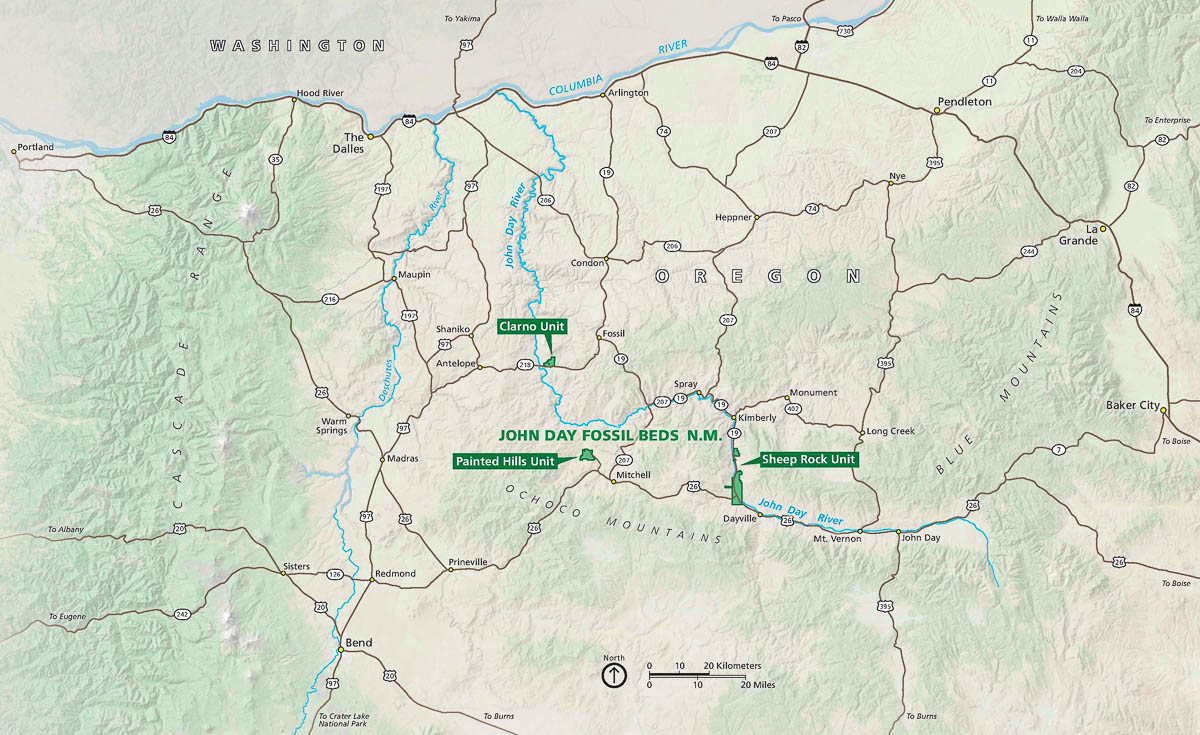
What Is the Best Time to Visit the Sheep Rock Unit?
All three units of John Day Fossil Beds National Monument, including the Sheep Rock Unit, are open 24/7 every day of the year.
That said, however, some seasons are better to visit the Sheep Rock Unit than others. Summer, for example, can be extremely hot in Oregon’s High Desert, while winter days may be snowy and icy.
The best times of year to visit the Sheep Rock Unit are late-spring and early-fall. Consider visiting in April, May, September, or October for the best weather, clear skies, and excellent hiking opportunities. I personally prefer the months of September and October.
In terms of the time of day, I strongly recommend visiting the Sheep Rock Unit at either sunrise or sunset—preferably both.
Sunrises are magical in this extraordinary landscape, while sunsets can also be quite spectacular in this rugged High Desert landscape. Watching the sunset from one of the unit’s scenic overlooks is amazing.
Is There an Entrance Fee at the Sheep Rock Unit?
No, the Sheep Rock Unit, as well as the rest of John Day Fossil Beds National Monument, is completely free to visit. There is no entrance fee.

Can I Camp at the Sheep Rock Unit?
No, there are no campgrounds in the Sheep Rock Unit, nor in the other units of John Day Fossil Beds National Monument.
However, while camping isn’t allowed in the national monument itself, there are many campgrounds scattered throughout the region. Options range from dispersed camping on BLM lands to full-service campgrounds in towns.
See the map below for a general overview of the locations of campgrounds near the Sheep Rock Unit. You can also find information about those campgrounds here on the John Day Fossil Beds website.
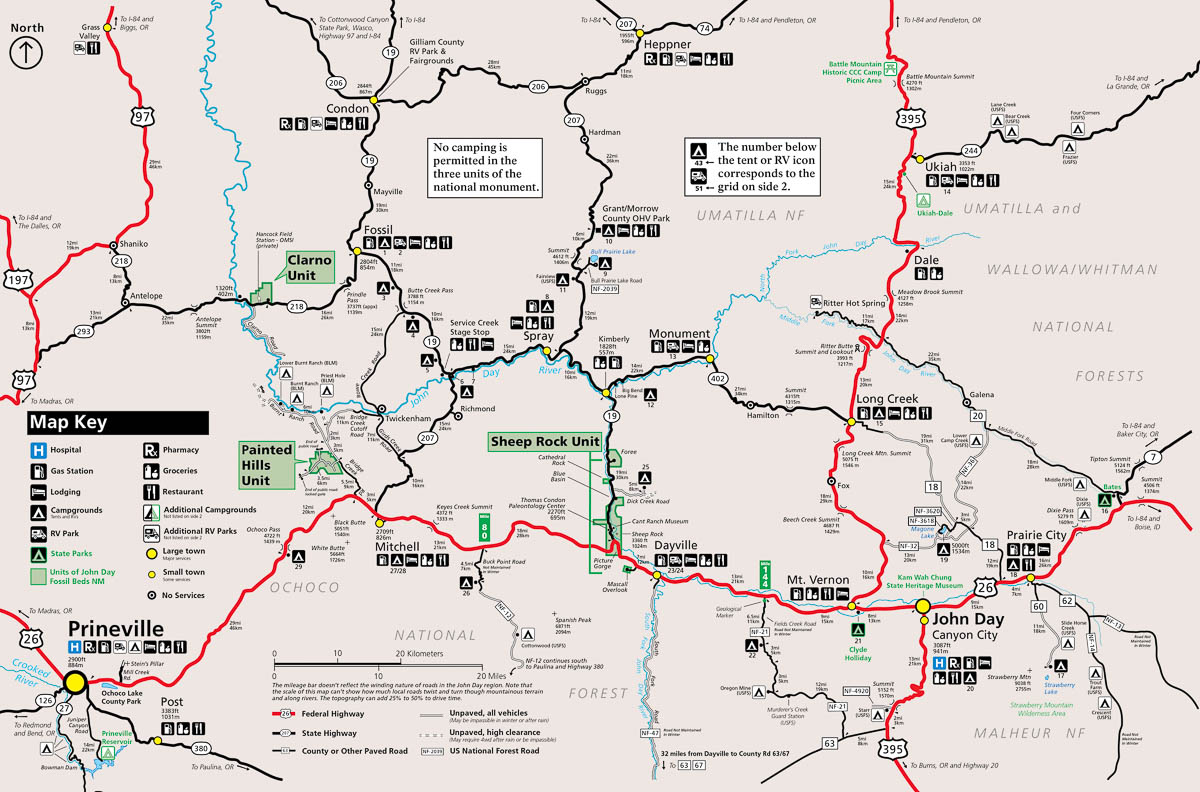
Which Facilities Are Available at the Sheep Rock Unit?
The Sheep Rock Unit is the largest of all three units in John Day Fossil Beds National Monument and this is where you’ll find the most visitor facilities, including the visitor center. The facilities available at the Sheep Rock Unit include:
- Thomas Condon Paleontology Center and Visitor Center (exhibits, working paleontology lab, trail maps, drinking water, gift and book store);
- Restrooms; and
- Two picnic areas.
The main visitor facility in the national monument is the state-of-the-art Thomas Condon Paleontology and Visitor Center. I loved visiting it and seeing paleontologists at work in the lab, while the exhibits are also superb.
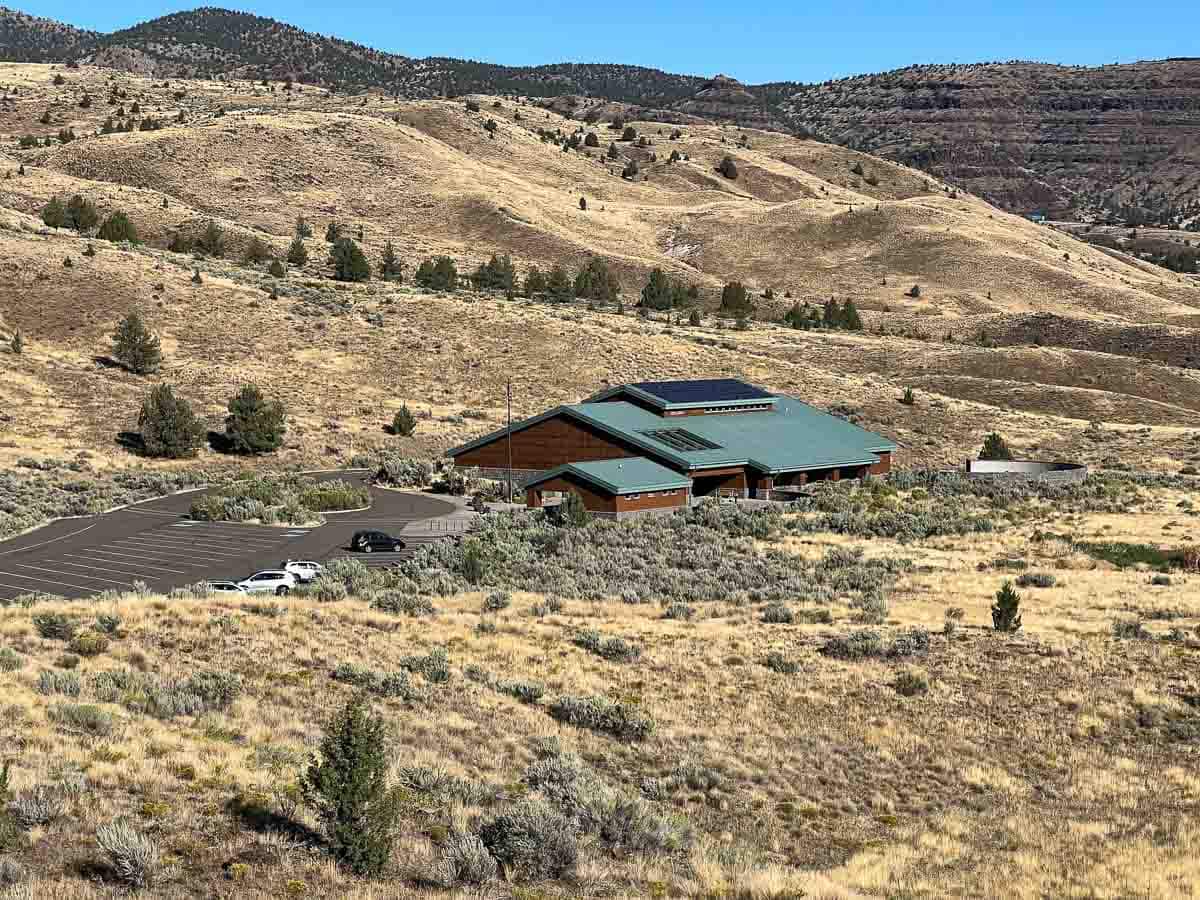
Where Should I Stay When Visiting the Sheep Rock Unit and John Day Fossil Beds National Monument?
I recommend staying in Mitchell, a small town that’s about 30 miles (or 40 minutes) to the west of the Sheep Rock Unit. This community may be very small, but it has everything you might need to spend a few days at John Day Fossil Beds National Monument. I also really appreciated its central location between the three units.
Accommodation options include the Oregon Hotel, the Little Pine Lodge, the Painted Hills Vacation Cottages, and the Spoke’n Hostel. I spent a couple of nights at the Little Pine Lodge and was very pleased with its amenities, spaciousness, and proximity to all other services in town.
CHECK ACCOMMODATION AVAILABILITY & RATES IN MITCHELL HERE.
Other places and services in Mitchell include a well-stocked grocery store, antique shop, a public park, small campground, public restrooms, and even a brewpub—the Tiger Town Brewing Company.
Additionally, there are a couple of fuel pumps (gasoline and diesel) right across the street from the Oregon Hotel and Little Pine Lodge. And yes, you can now pump your own gas in Oregon!
Are There Any Dangerous Animals at the Sheep Rock Unit in Oregon?
Yes, there are a handful of potentially dangerous animals at the Sheep Rock Unit. Although it’s unlikely you’ll see them, it’s still important to be aware of their presence (and to know what to do if you encounter one).
Snakes
Most snake sightings at the Sheep Rock Unit are non-venomous bull snakes or garter snakes. There are, however, also two species of rattlesnakes—the prairie rattlesnake and northern Pacific rattlesnake.
Learn what to do when you encounter a rattlesnake here.
Scorpions
This semi-arid desert landscape is an optimal scorpion habitat, too. Scorpions in the John Day Fossil Beds are not considered deadly, but a sting might cause an allergic reaction or illness in some people. These fascinating, small arachnids are rarely seen during the day, though, and are not a cause for concern.
Ticks
Adult ticks hang out on grasses and low vegetation, waiting until a person or animal brushes against the plant. Once they’ve transitioned from plant to mammal, they can spend a couple of hours looking for the ideal place to attach themselves.
There’s quite a bit of vegetation throughout the Sheep Rock Unit where ticks might be found, particularly alongside the John Day River and at the James Cant Ranch.
Learn about how to prevent tick bites here.
Spiders
One of North America’s three venomous spiders also lives in the John Day Fossil Beds—the black widow. They are pretty venomous, but bites are very rare.
Black widows are usually found in holes in the ground, around stumps, under stones, on the exteriors of buildings, and in piles of leaves. Be especially careful around the old farm buildings at the James Cant Ranch.
Mountain Lions
John Day Fossil Beds National Monument, including the Sheep Rock Unit, is home to mountain lions, also known as cougars or pumas. Actually seeing one of these large cats, let alone a close encounter, is exceedingly rare, though.
Yet, it’s still vitally important to know how to behave in mountain lion country. It’s advised, for instance, to hike in groups and keep kids and pets close. In case of an encounter, never run from a mountain lion and make yourself as large as possible.
Learn what to do if you encounter a mountain lion here.
Can I Bring My Dog to the Sheep Rock Unit?
Yes, absolutely! Dogs are welcome almost everywhere in John Day Fossil Beds National Monument, including overlooks, picnic areas, and hiking trails.
They must be kept on a leash that’s no longer than 6 feet at all times. Note that dogs are not allowed within government buildings like the Thomas Condon Paleontology Center and Visitor Center.
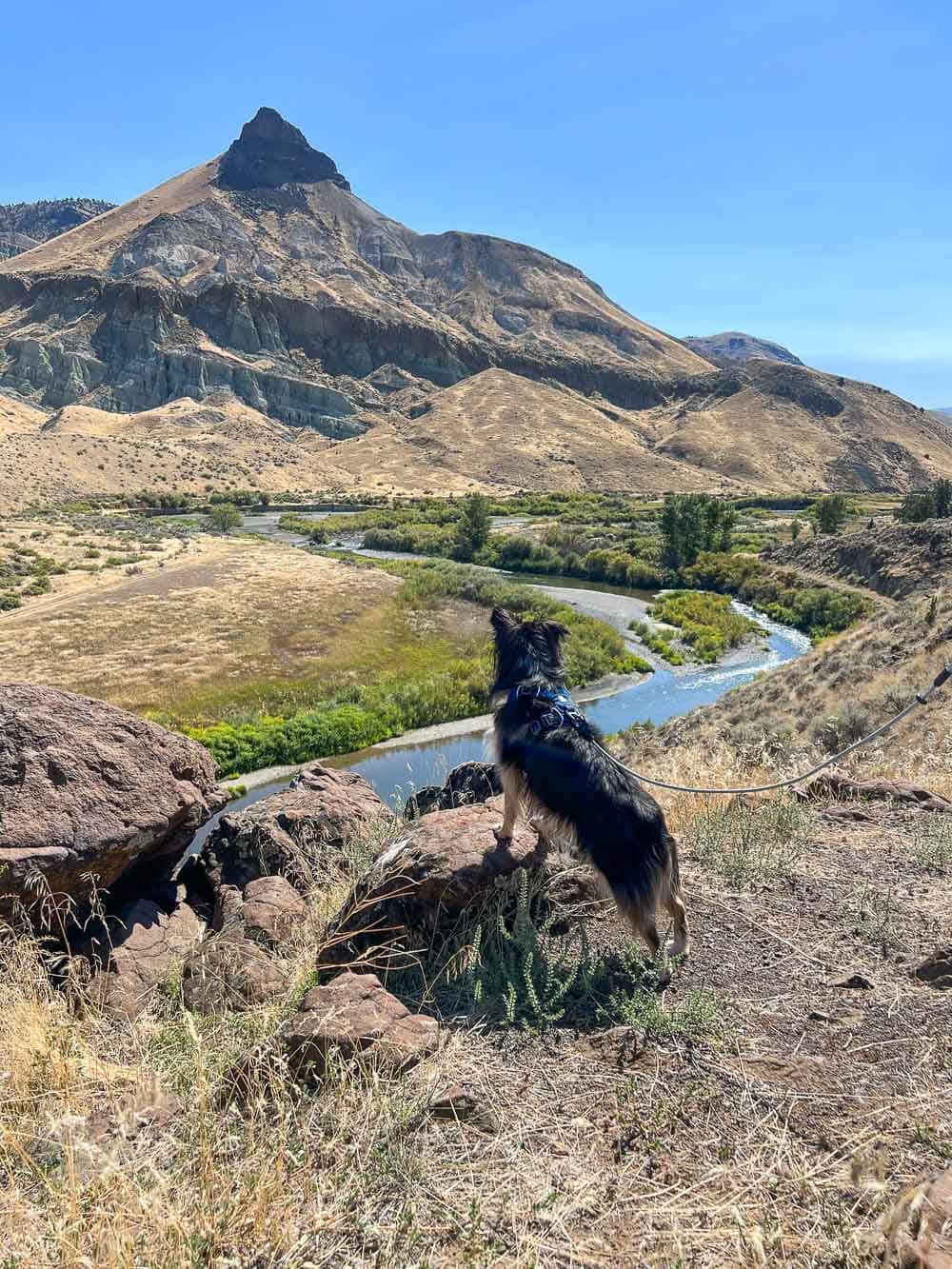
What Are the Best Hikes at the Sheep Rock Unit?
The best way to explore the marvelous Sheep Rock Unit is on foot. There are no fewer than eight different hiking trails in the Sheep Rock Unit.
Most of them are rather short, ranging from about 0.25 miles to 0.5 mile, but there’s also the spectacular 3.25-mile Blue Basin Overlook Trail. (I will describe my five favorite Sheep Rock trails in more detail below).
- Flood of Fire Trail (0.4 miles, out and back)
- Story in Stone Trail (0.3 miles, lollipop)
- Island in Time Trail (1.3 miles, out and back)
- Blue Basin Overlook Trail (3.25 miles, loop)
- River Trail (0.6 miles, out and back)
- Sheep Rock Overlook Trail (.5 miles, out and back)
- Thomas Condon Overlook Trail (0.25 miles, out and back)
- Mascall Formation Overlook Trail (430 feet, out and back)
How Much Time Do I Need to Visit the Sheep Rock Unit?
You could easily see the Sheep Rock Unit in a couple of hours, but I suggest dedicating one full day, including a sunrise and/or sunset, to this spectacular area in central Oregon.
The hills, rock formations, and riverside scenery are breathtaking at dawn and dusk, while mornings and evenings are also the best (and coolest) time to hike the Sheep Rock Unit trails.
In between sunrise and sunset hikes, you can rest up at one of the two picnic areas, go take a nap at your accommodation, or explore the phenomenal Thomas Condon Paleontology Center and Visitor Center.
10 Best Things to Do at the Sheep Rock Unit (John Day Fossil Beds National Monument)
While the Painted Hills get most of the attention and praise, I think the Sheep Rock Unit is massively underrated and underappreciated.
I really do think it’s better than the Painted Hills, simply because it’s more varied, there are more hiking trails, a fantastic visitor center, historic sites, and there’s just generally more to experience. (That said, however, you should definitely visit the Painted Hills Unit as well if you haven’t before!)
1. Visit the Thomas Condon Paleontology Center and Visitor Center
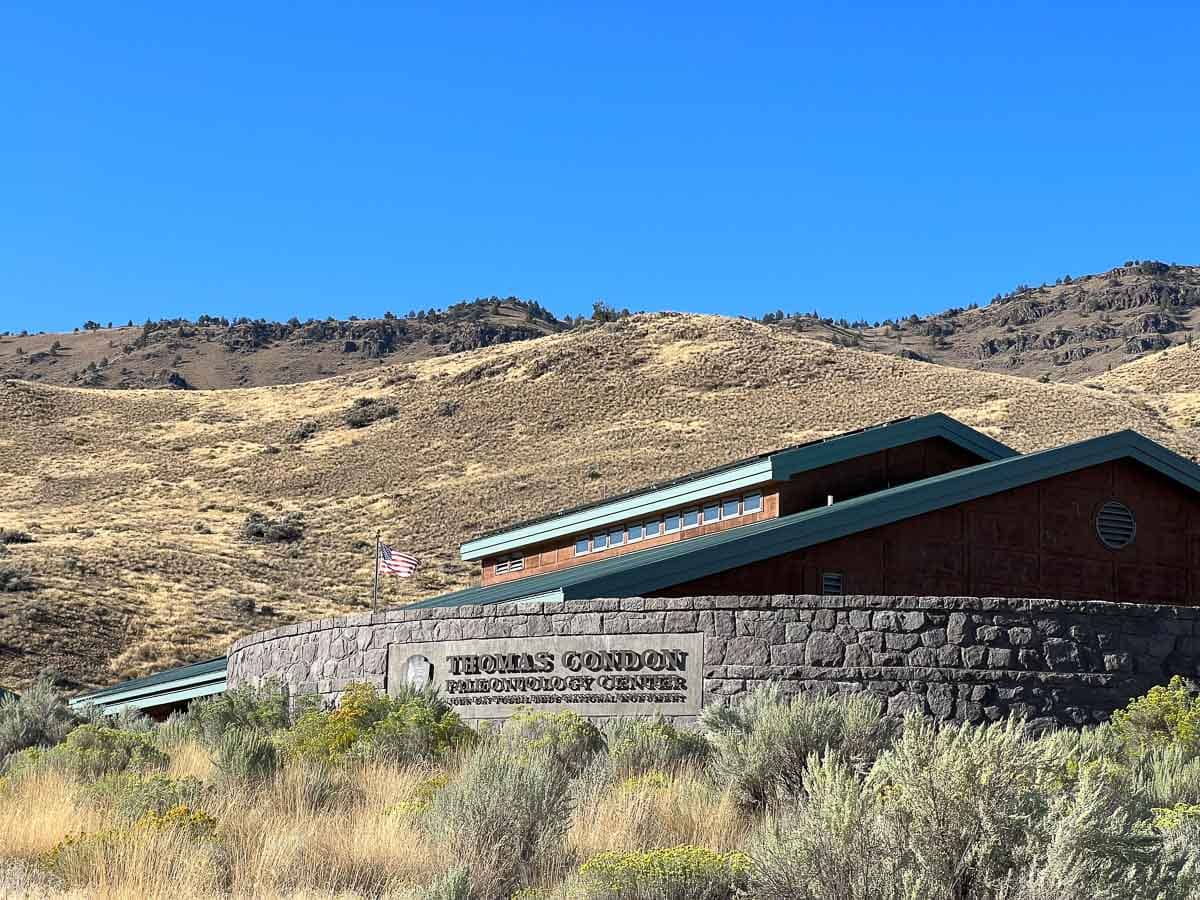
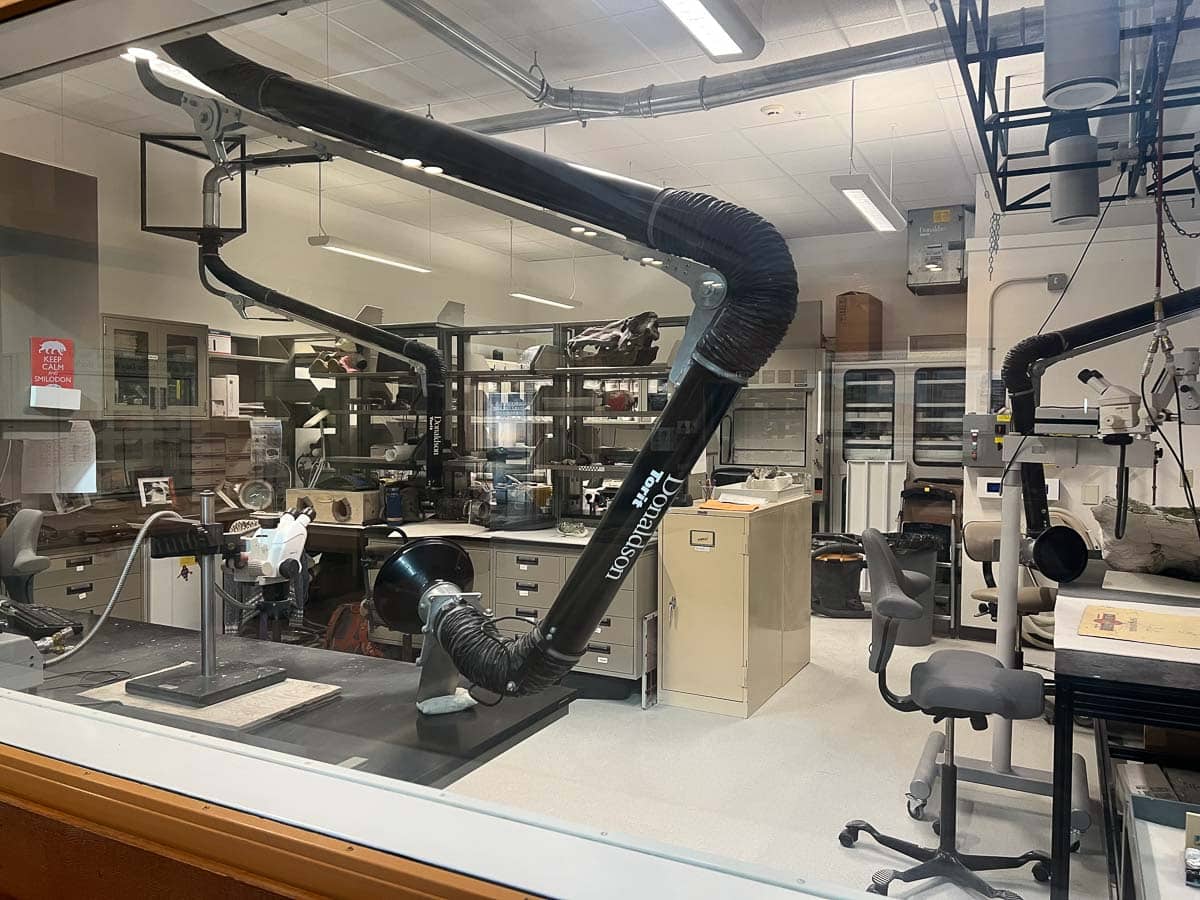
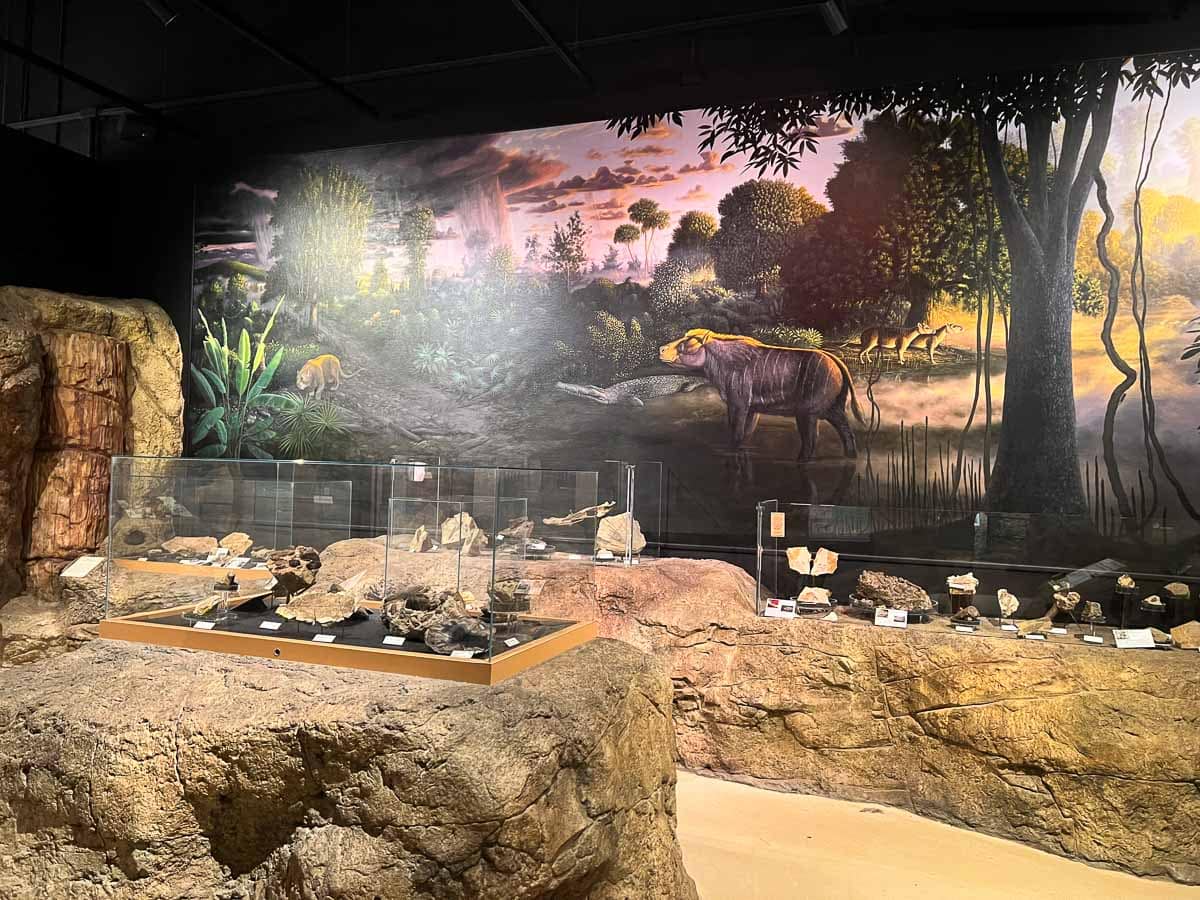
I don’t think it’s a stretch to say that the Thomas Condon Paleontology Center in the Sheep Rock Unit is one of the prime visitor facilities in the entire National Park System. It’s absolutely state-of-the-art.
The center was named after “the prominent 19th-century Oregon scientist who first recognized the significance of the fossil beds and did the first scientific collection and study of specimens,” the Park Service says.
It serves as both a modern research facility and an excellent visitor center. You can literally watch paleontologists work in the laboratory through viewing windows, while its exhibits display more than 500 fossil specimens unearthed from the John Day Fossil Beds, alongside stunning murals.
Other features of the Thomas Condon Paleontology Center and Visitor Center include a 20-minute orientation film, restrooms, a water bottle filling station, and a small gift shop and bookstore.
2. Walk the Thomas Condon Overlook Trail
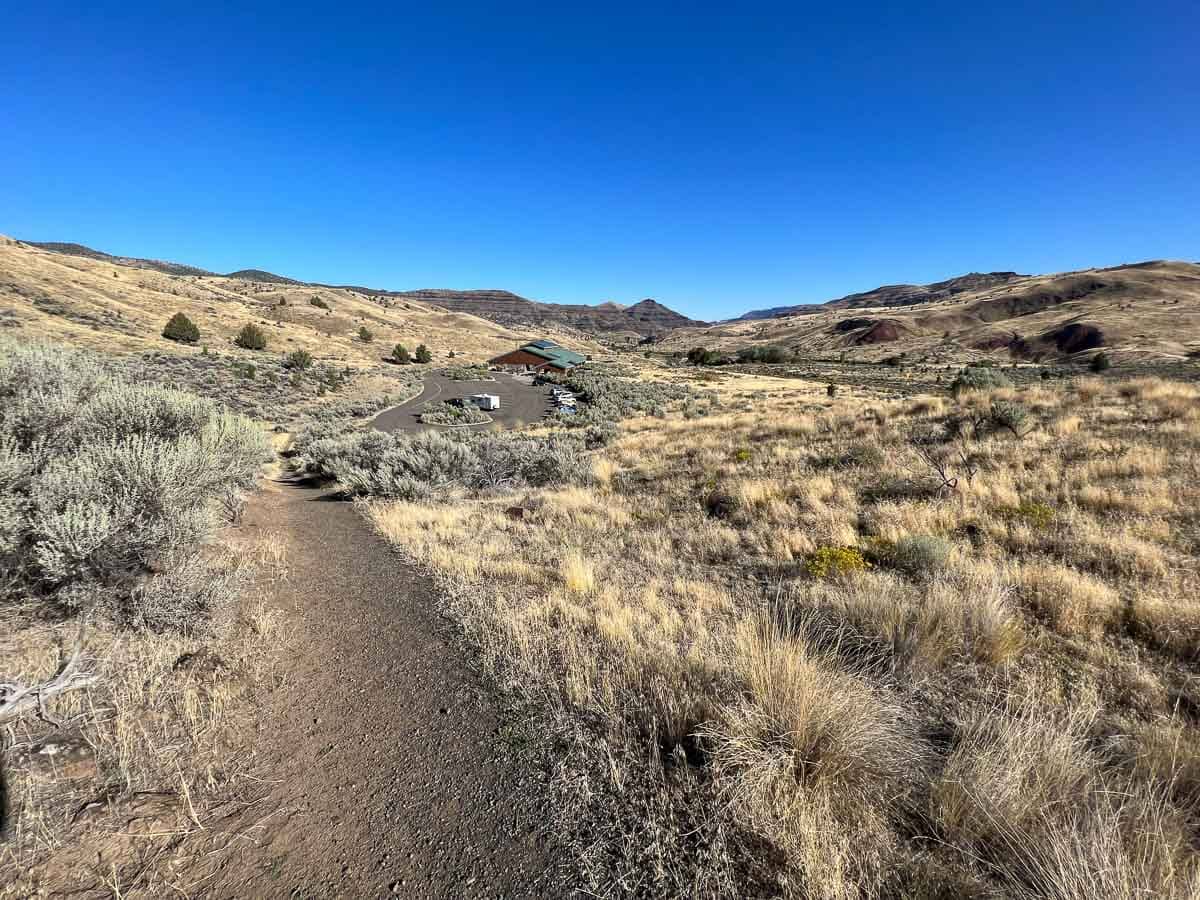
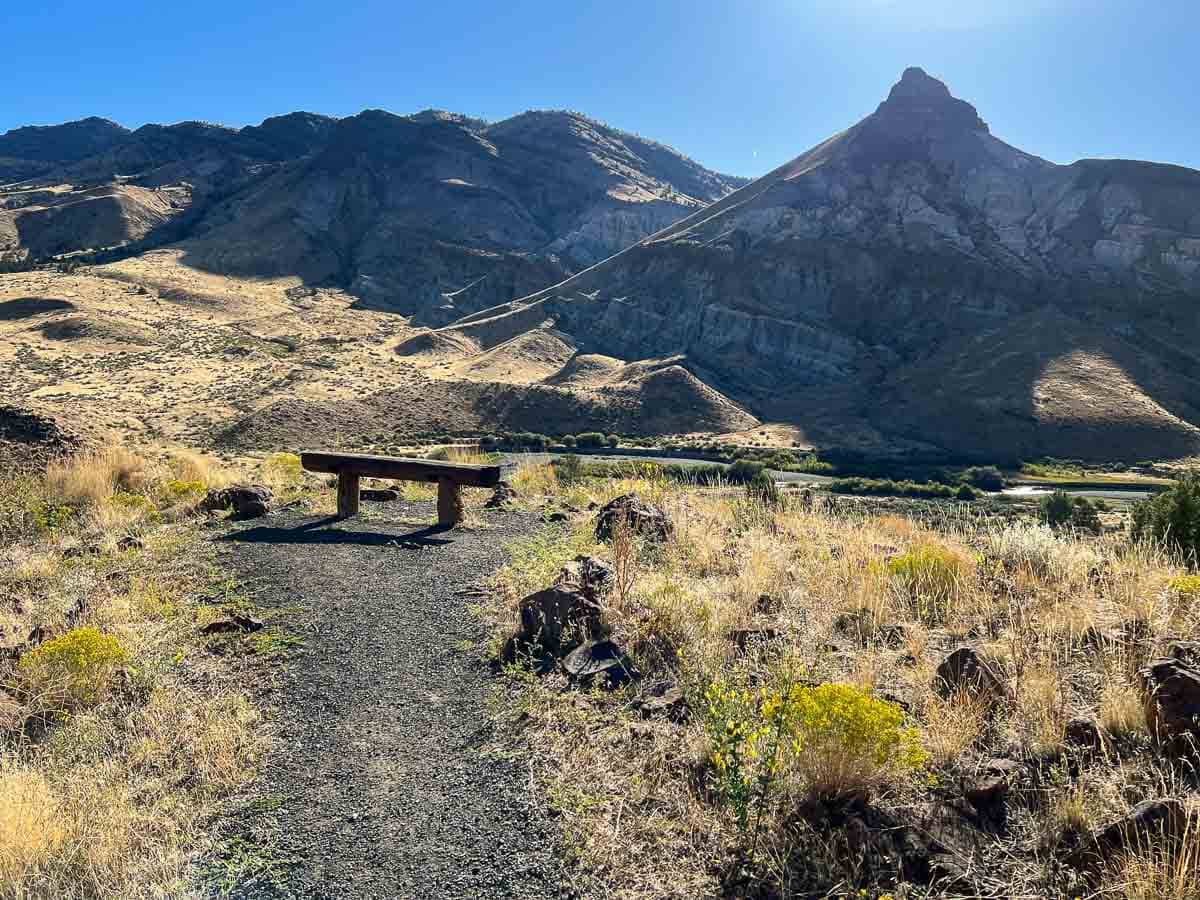
Starting at the far end of spacious parking lot at the Thomas Condon Paleontology Center and Visitor Center, the Thomas Condon Overlook Trail ends at a viewpoint that overlooks the John Day River valley.
The viewpoint also has a prominent view of Sheep Rock itself, the namesake of this unit of John Day Fossil Beds National Monument. It’s a relatively easy 0.5-mile roundtrip hike.
3. Enjoy the View from the Mascall Formation Overlook

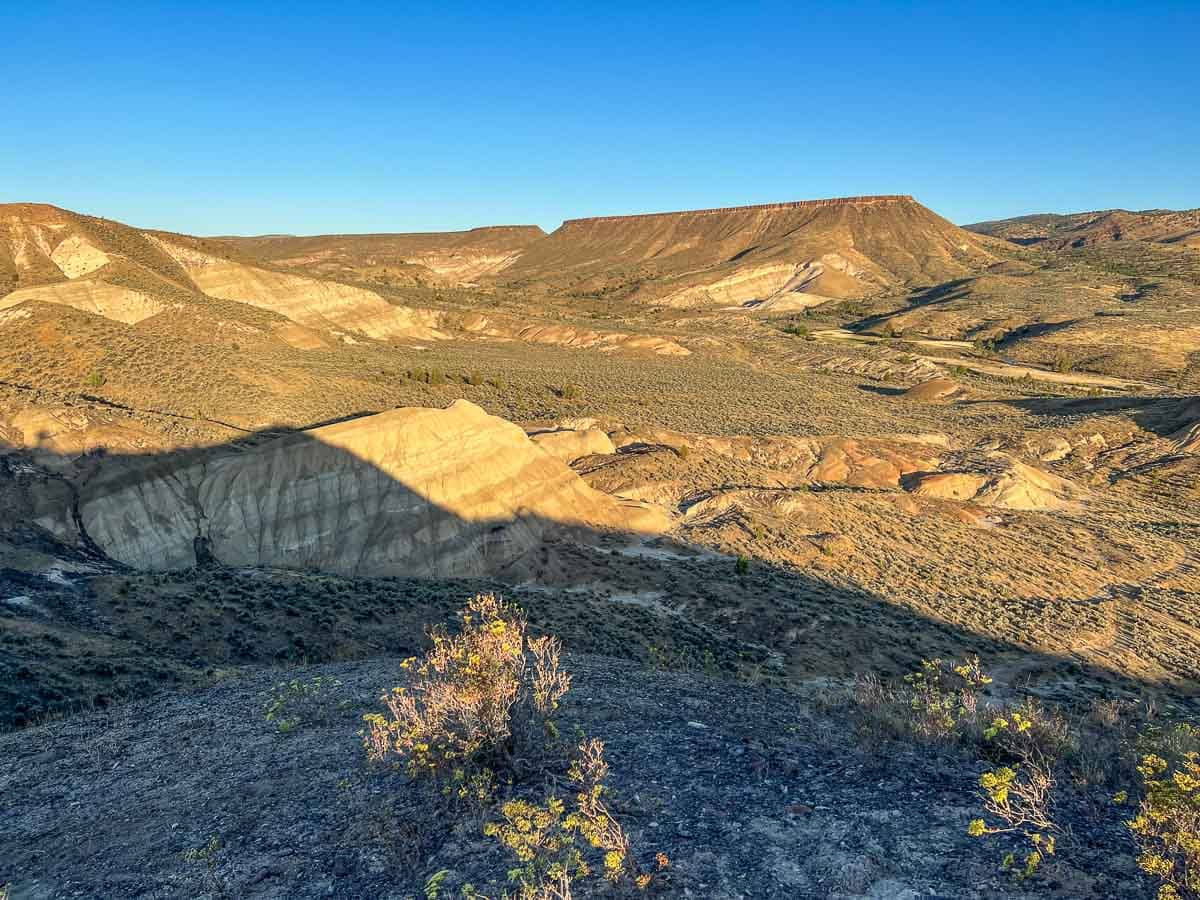
Situated near the southern boundary of the Sheep Rock Unit, the Mascall Formation Overlook may not be breathtakingly spectacular, but it’s significant from a geological perspective, nonetheless.
The overlook is at the end of a very easy 430-foot roundtrip trail and shows a panorama that takes in the Mascall Formation itself, as well as Picture Gorge and the John Day Valley.
The geologic layers and formations you can see from the overlook are part of the 15-million-year-old Mascall Assemblage, one of the four major fossil layers of the Sheep Rock Unit.
4. Drive Through Scenic Picture Gorge
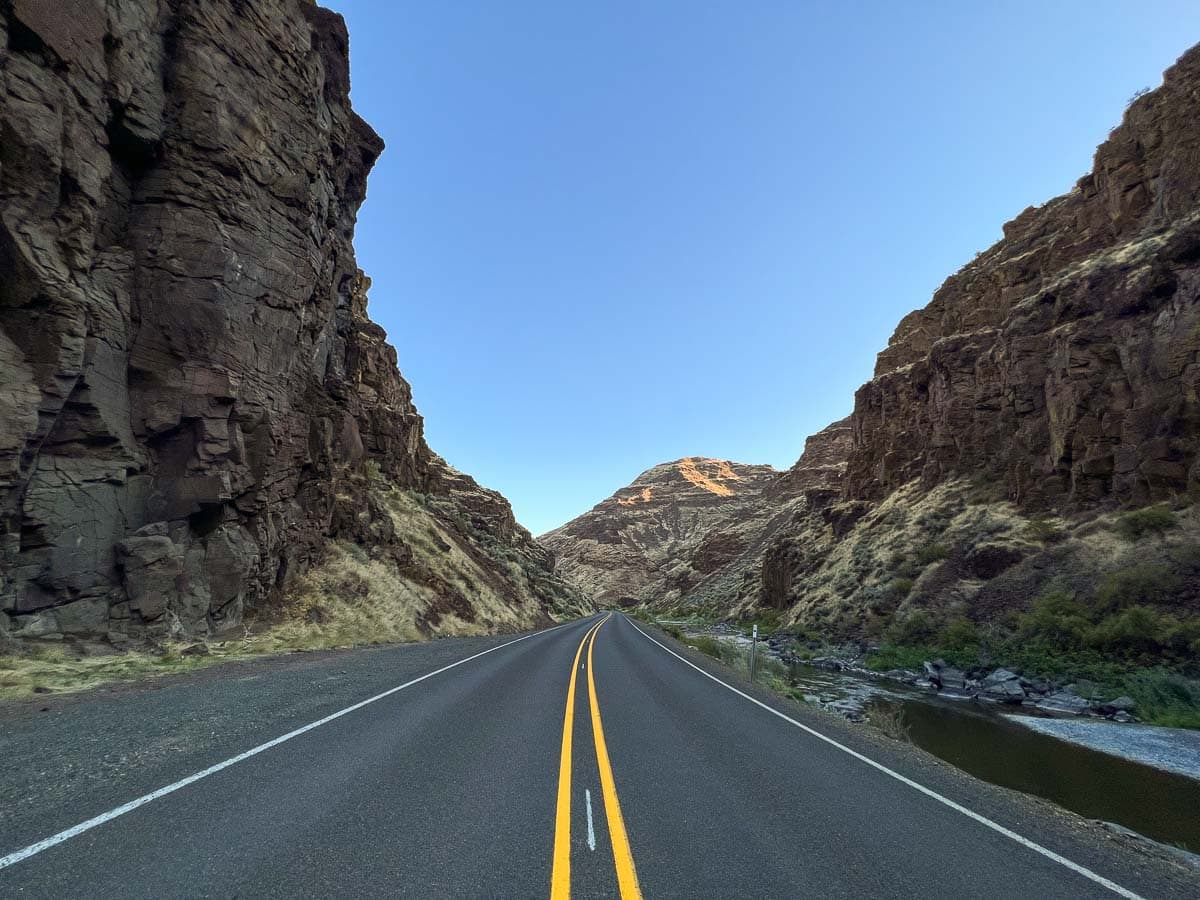
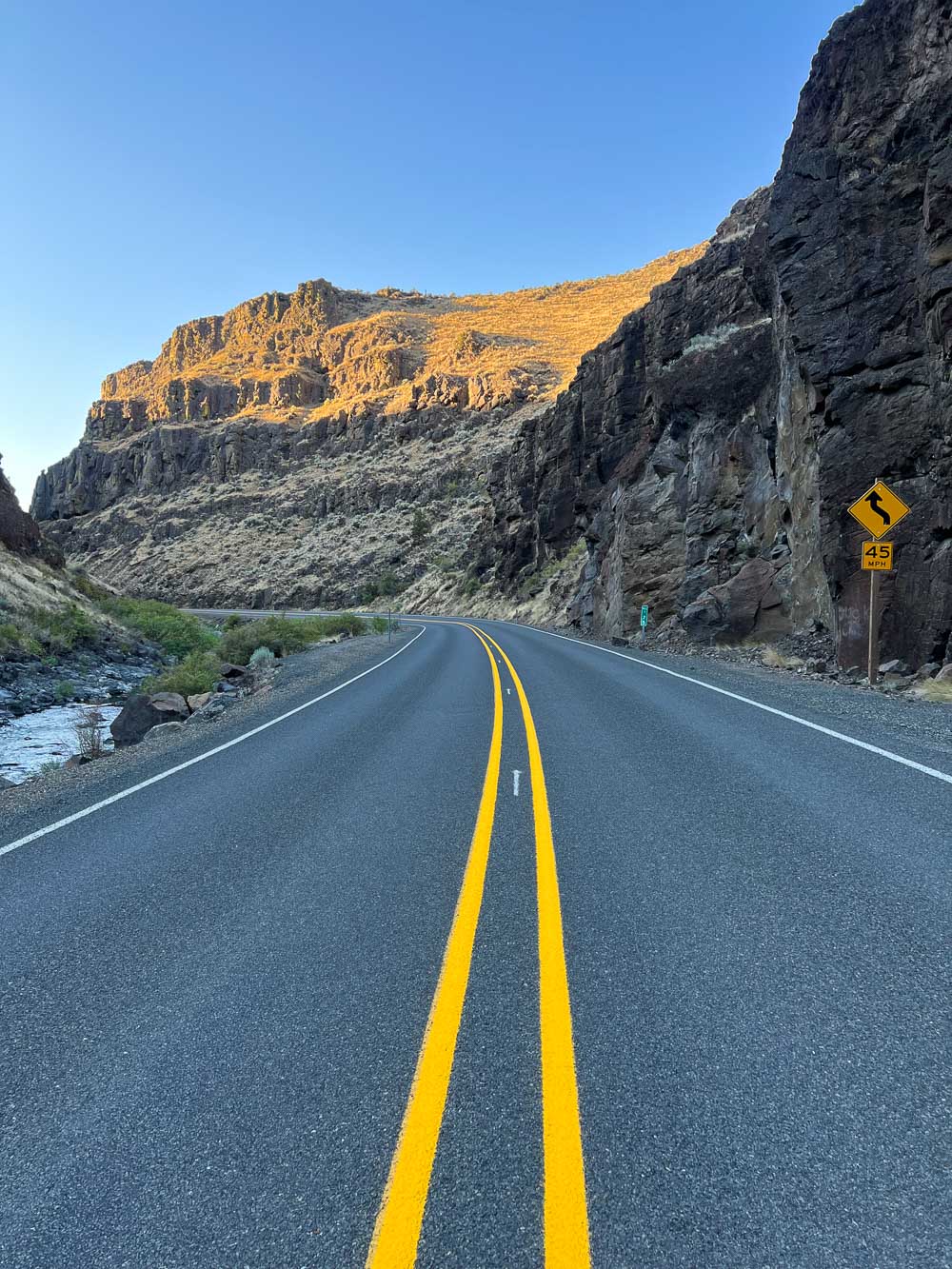
There are three entrances to the Sheep Rock Unit, but none are more spectacular than the one through Picture Gorge.
This exceptionally narrow gorge consists of no fewer than seventeen individual layers of flood basalts, creating a truly stunning place to drive through. Although these basalts are found throughout the Sheep Rock Unit, nowhere are they more visible and accessible than in Picture Gorge.
Note that Picture Gorge is very narrow and there are few places to pull over, so be careful when you get out of your vehicle to take, well, pictures of the gorge.
5. Explore the Historic Cant Ranch
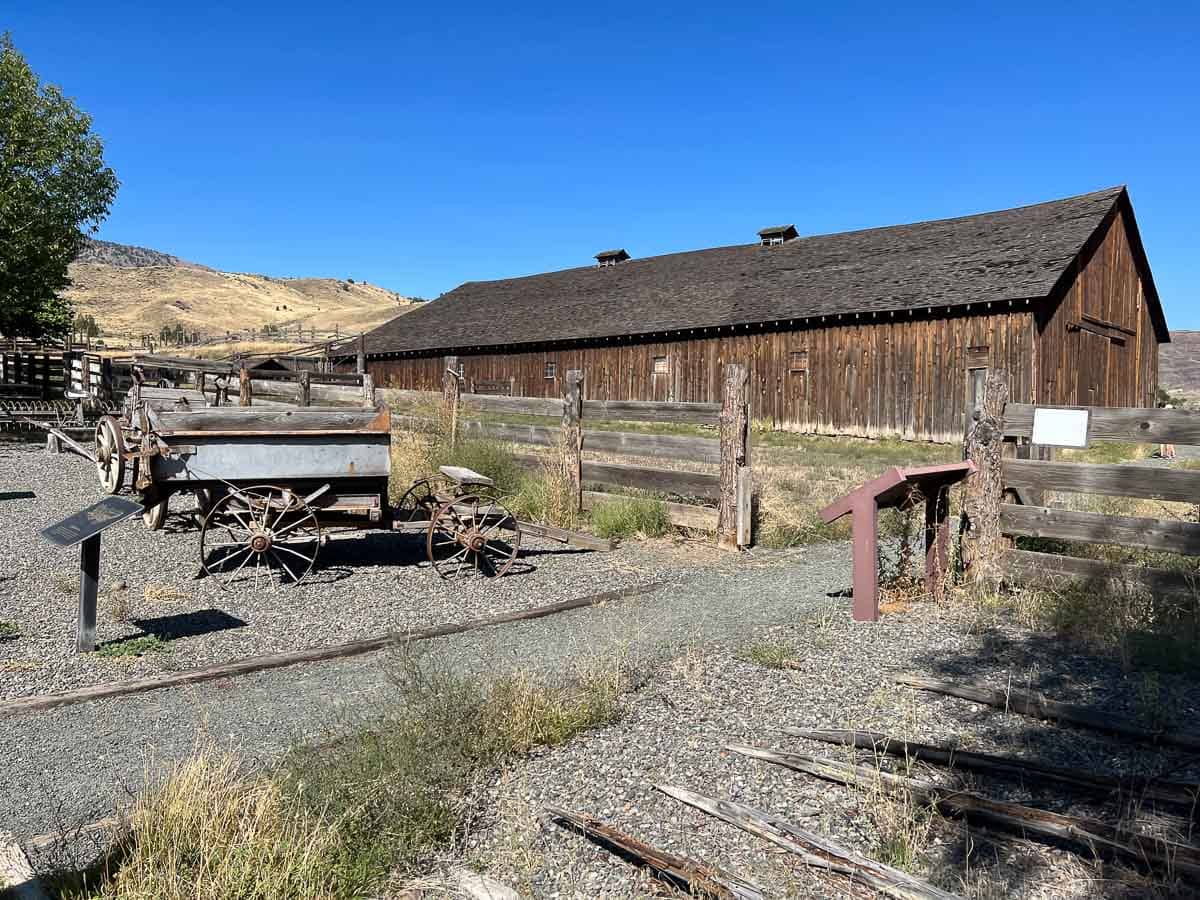
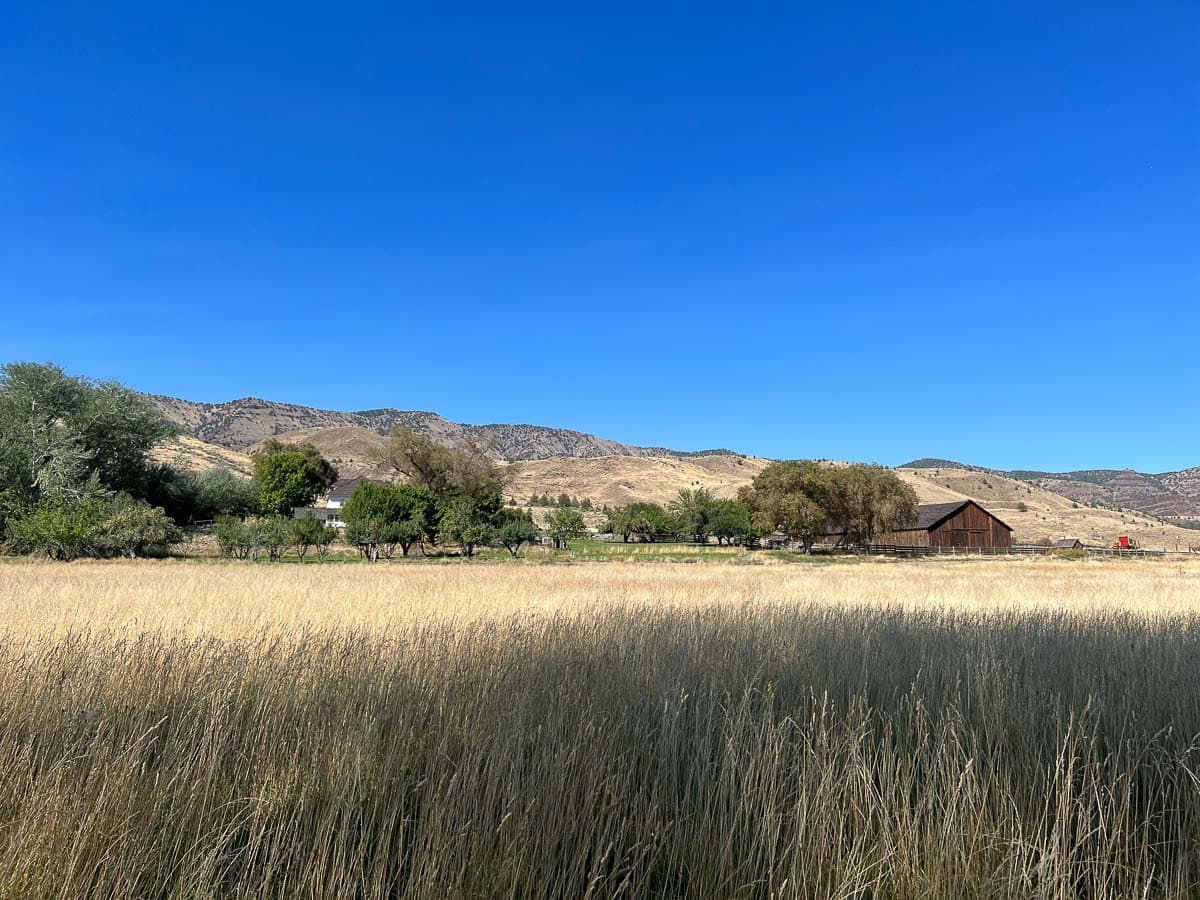
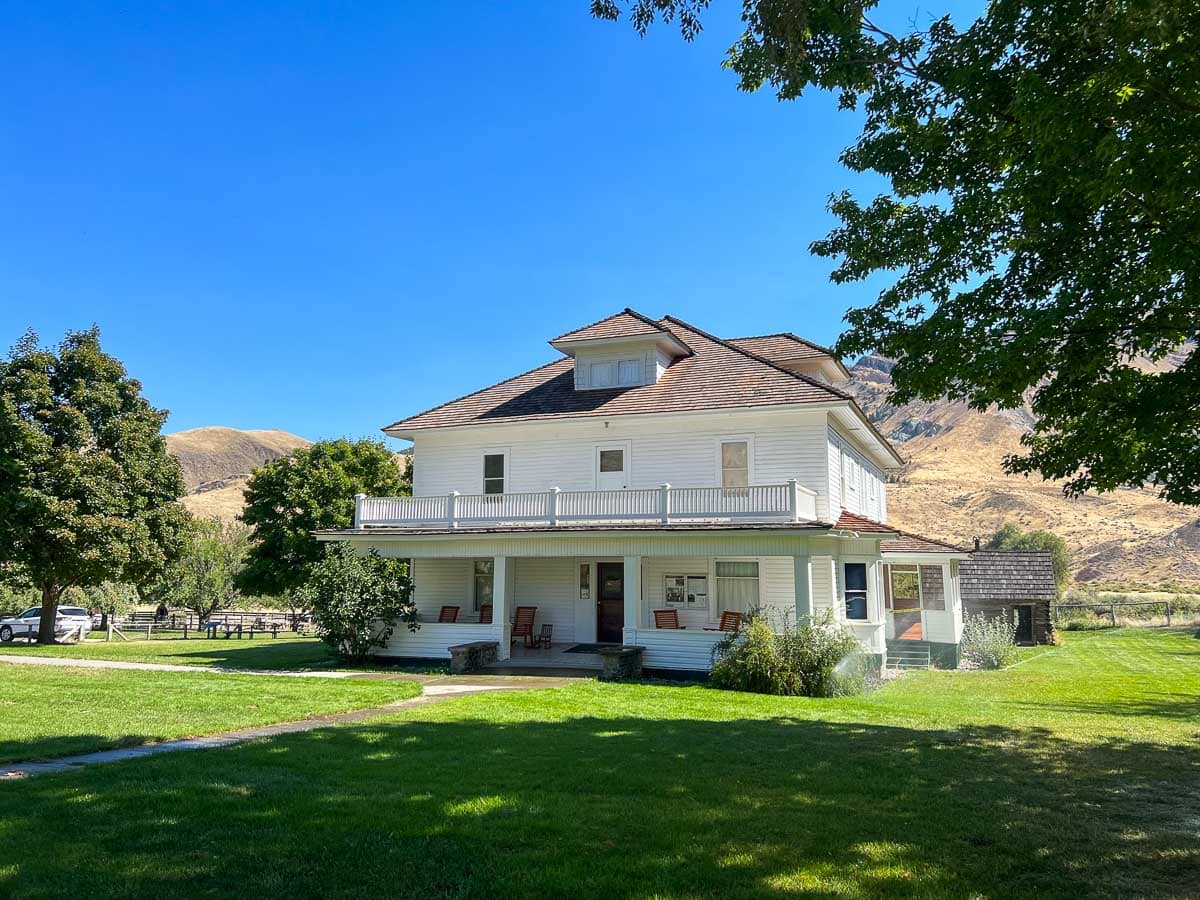
Located across the street from the Thomas Condon Paleontology Center and Visitor Center, the Historic Cant Ranch is another unique feature of the Sheep Rock Unit.
The ranch dates from 1910, which is when “Scottish immigrants James and Elizabeth Cant purchased approximately 700 acres of land from the Officer family and established their own ranch,” according to the National Park Service.
The old Cant house now serves as the headquarters of John Day Fossil Beds National Monument. You can tour parts of the house in summer—it is closed in fall, winter, and spring.
The Cant Ranch grounds and trails are open 24/7, though. There’s a nice self-guided walk around several old ranch buildings, while the River Trail leads to the banks of the John Day River.
6. Hike the Sheep Rock Overlook Trail
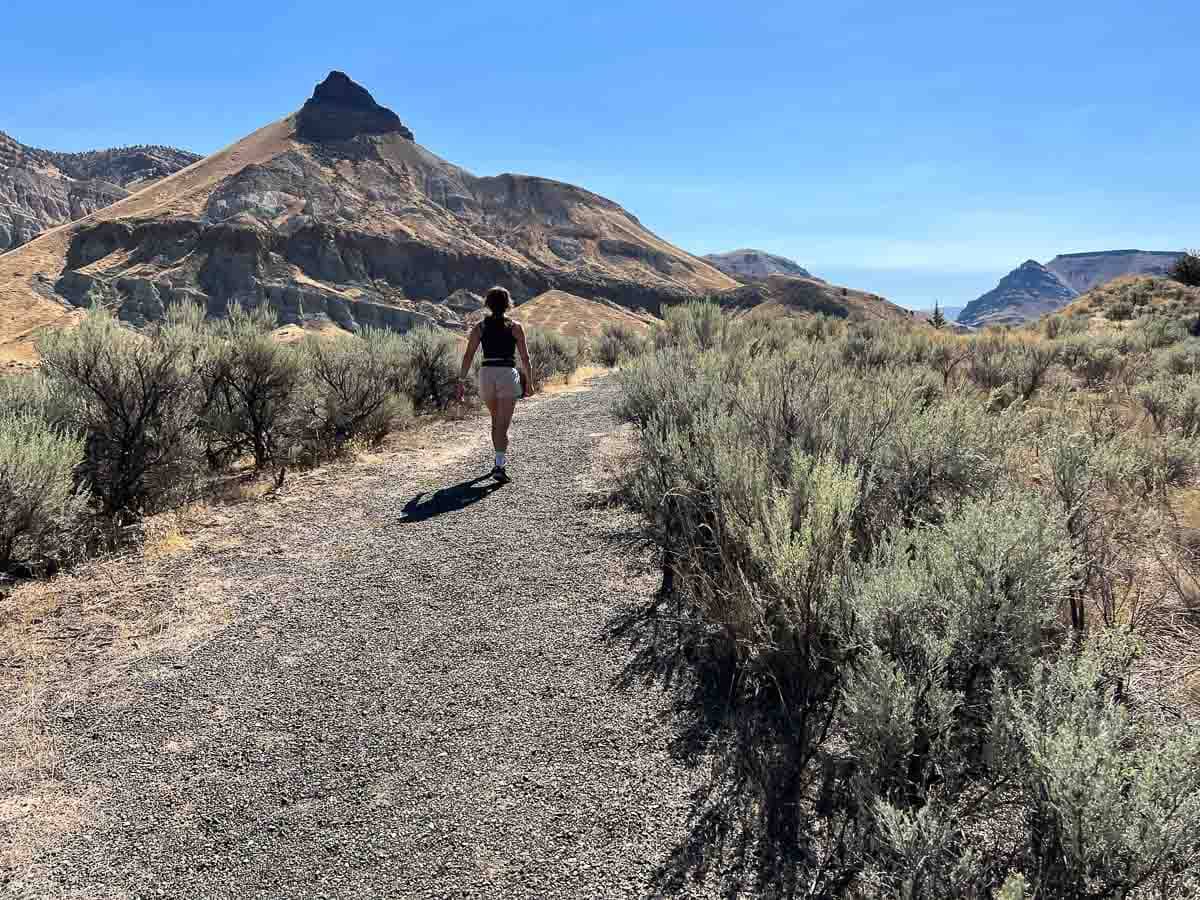
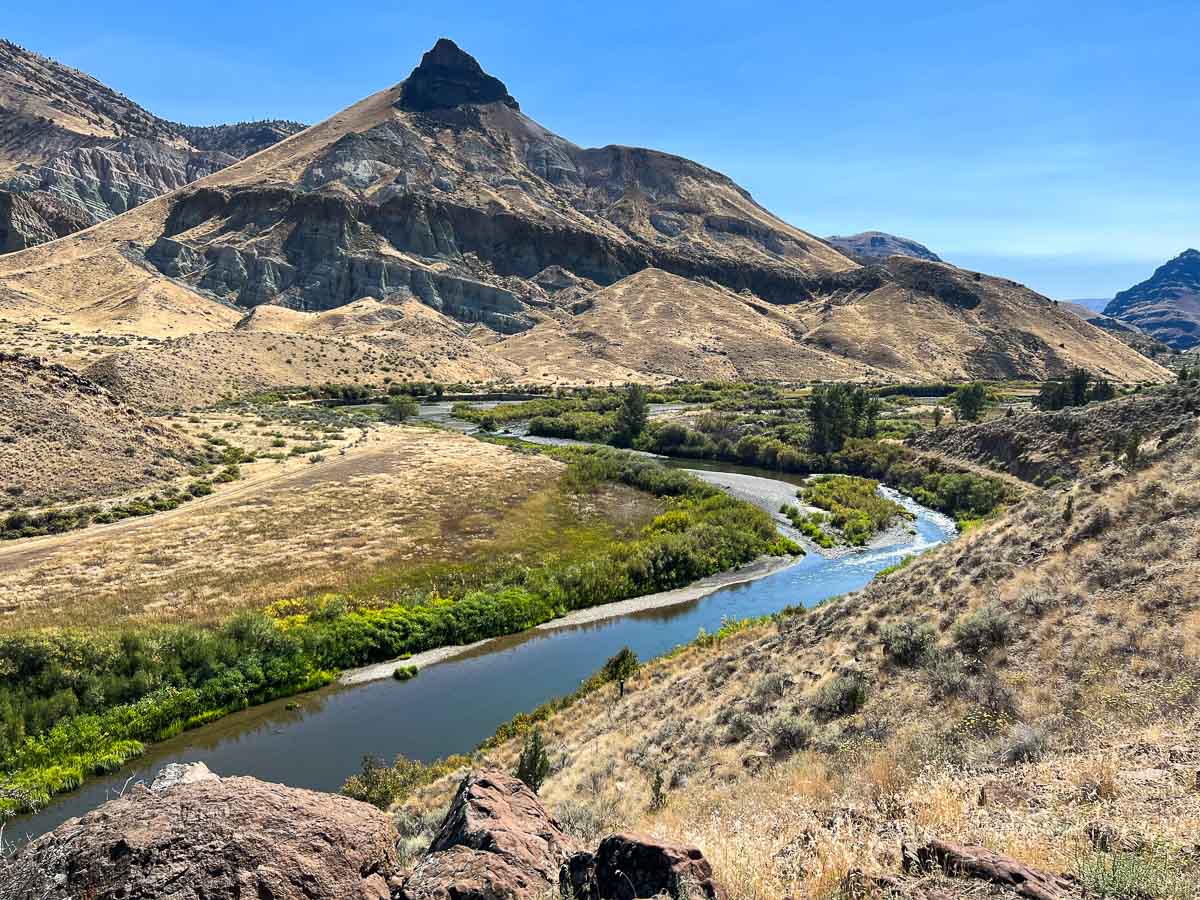
Although it’s not particularly long or difficult, the 0.5-mile roundtrip Sheep Rock Overlook Trail is still one of my favorite hikes in the Sheep Rock Unit.
The trail starts near the front gate of the Historic Cant Ranch and gently climbs to an overlook of the John Day River valley. As its name implies, there’s a great view of Sheep Rock, too, which may be my favorite view in the entire national monument.
7. See Rock Strata at Goose Rock
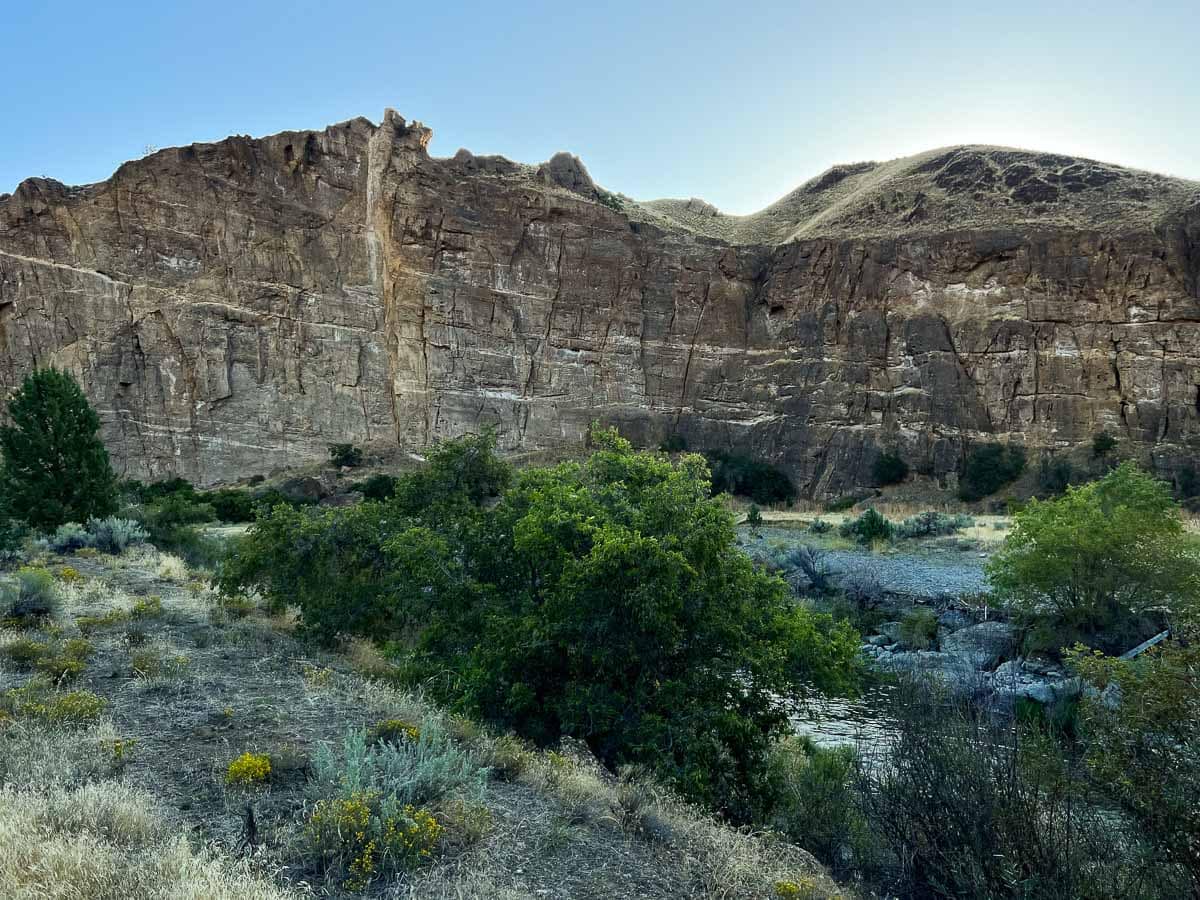
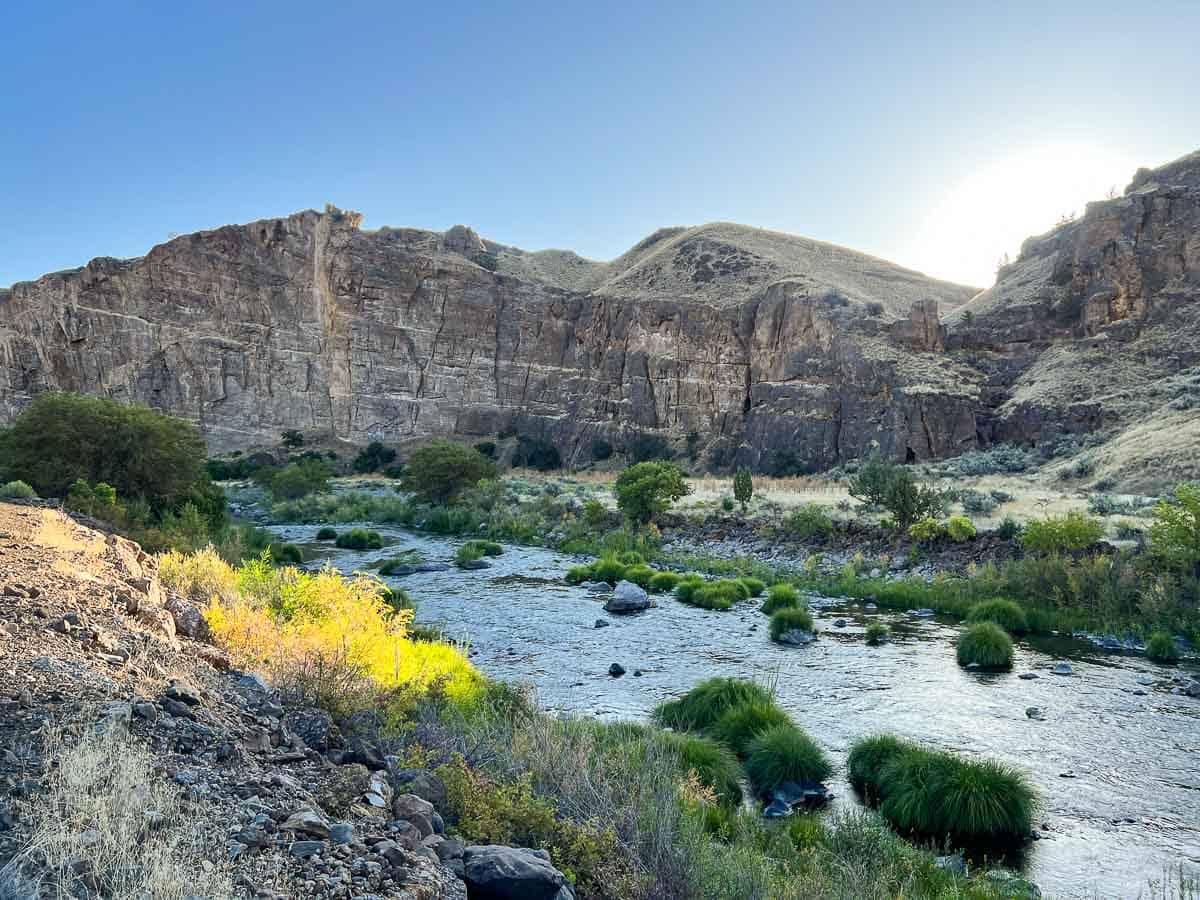
There are many striking rock formations throughout the Sheep Rock Unit, but, in my opinion, Goose Rock should not be missed.
It’s located about halfway between the Cant Ranch and the Blue Basin Area, an unassuming pullout on the side of the road.
Goose Rock is particularly noteworthy because it so clearly showcases a variety of rock strata—the Goose Rock Conglomerate, which is part of the Gable Creek Formation that encompasses late-Cretaceous river deposits.
I personally also think it’s just a very scenic spot, with this tall and ancient cliff rising above the meandering John Day River. Definitely worth stopping at!
8. Immerse Yourself in the Spectacular Blue Basin Area
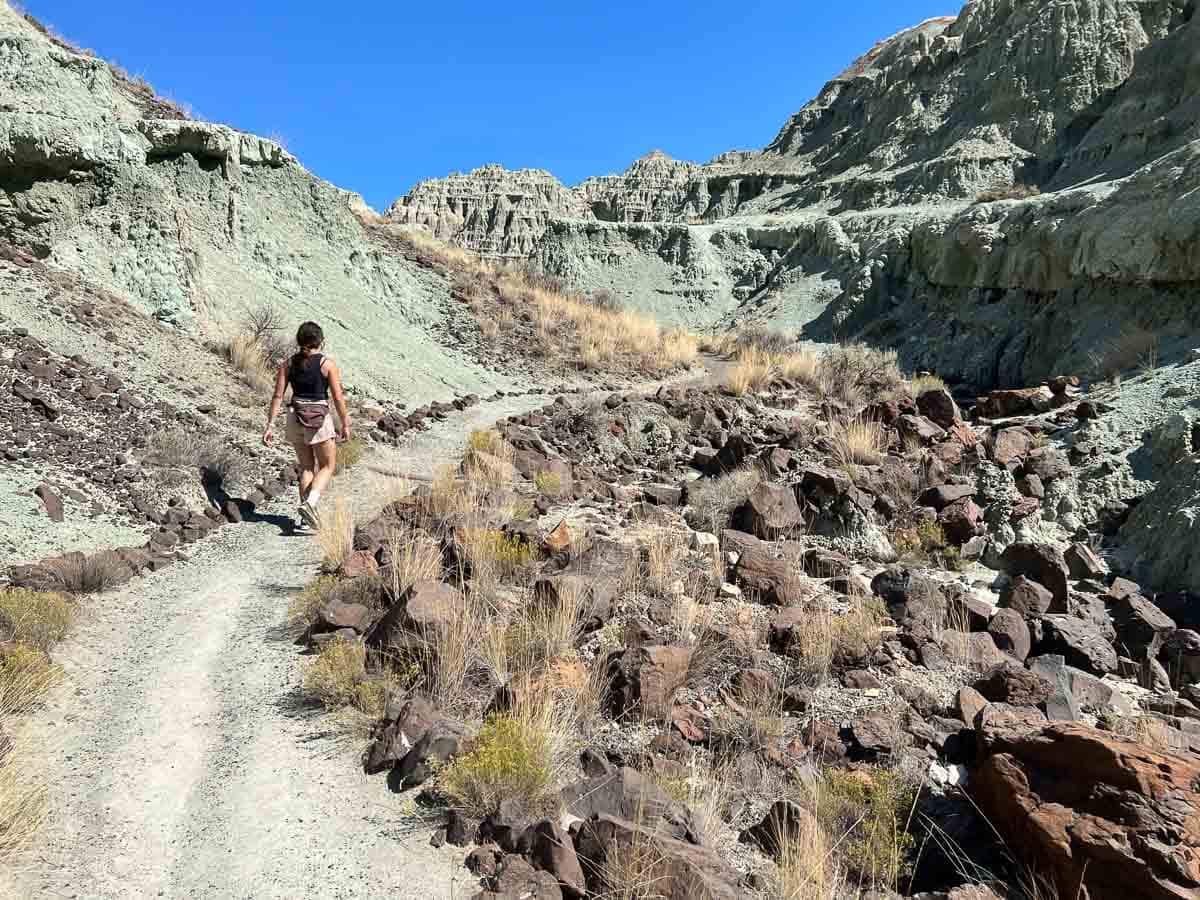
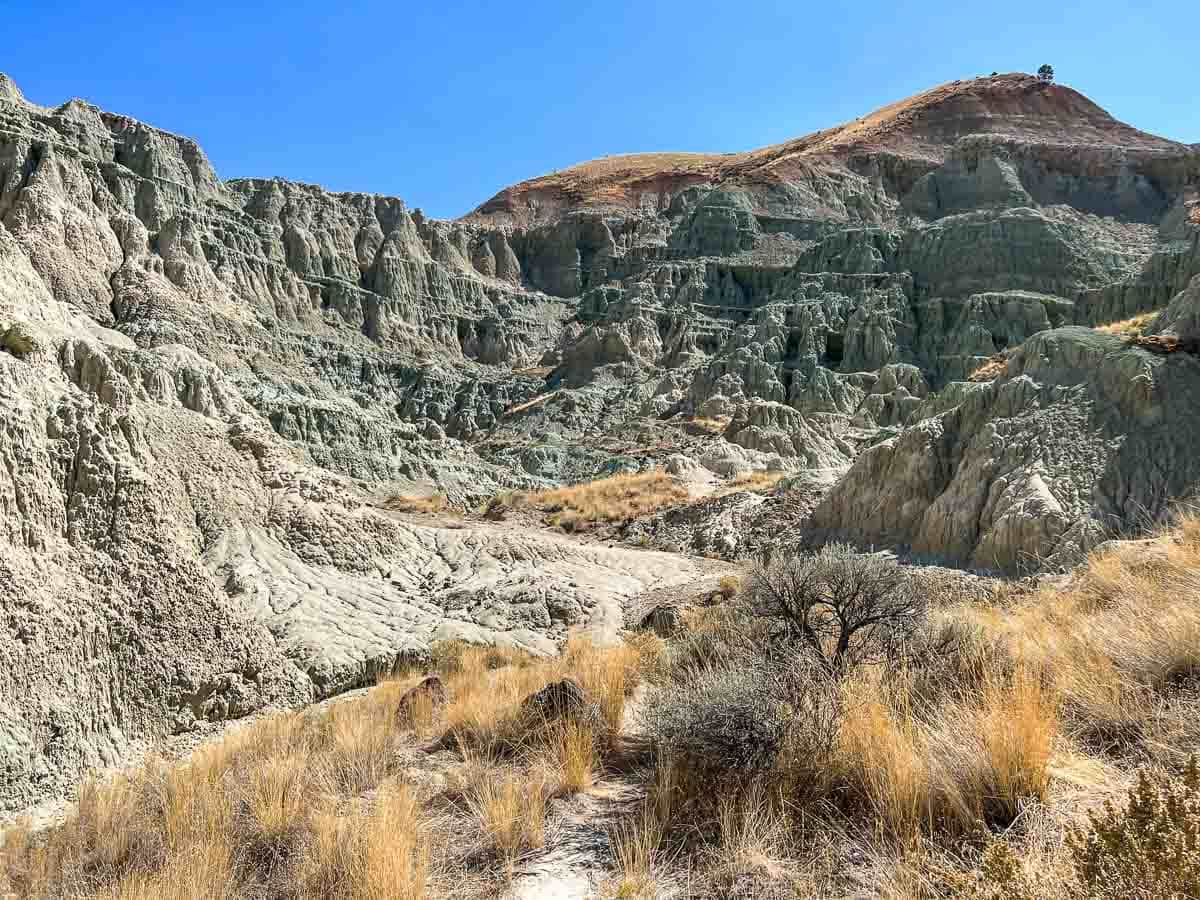
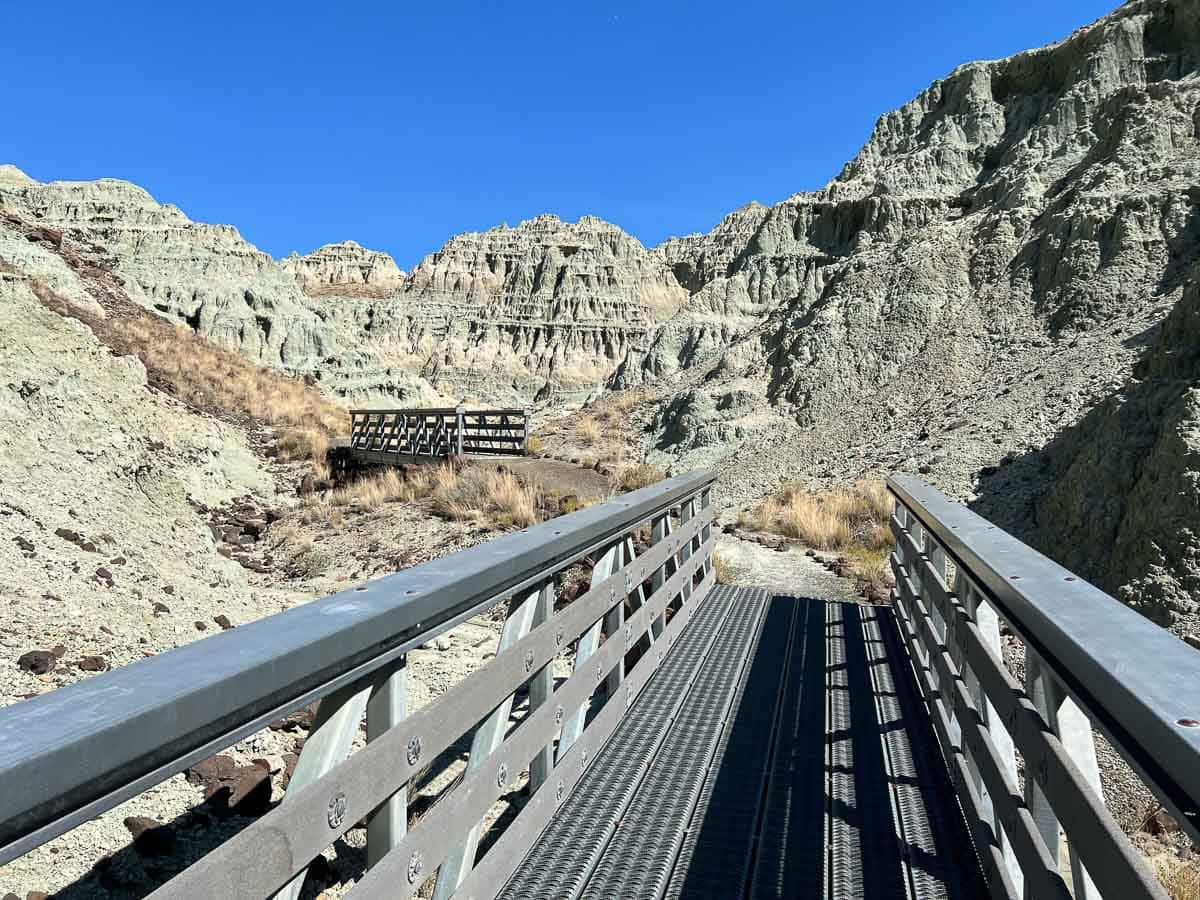
Although the Blue Basin Overlook Trail—the longest trail in John Day Fossil Beds National Monument—offers a fantastic view of the Blue Basin, I’d recommend actually hiking into it. You can do that on the Island in Time Trail, which is a moderate 1.3-mile roundtrip hike.
This excellent trail leads deep into the heart of the Blue Basin, a collection of extraordinary blue-green badlands. Along the way, fossil replicas and exhibits tell the story of ancient animals that used to call this landscape home.
NOTE: The Island in Time Trail has more than a dozen metal bridges with rough footplates. If you’re hiking with your dog, note that dogs may refuse to cross these bridges and you will probably have to carry them across.
9. Photograph Iconic Cathedral Rock
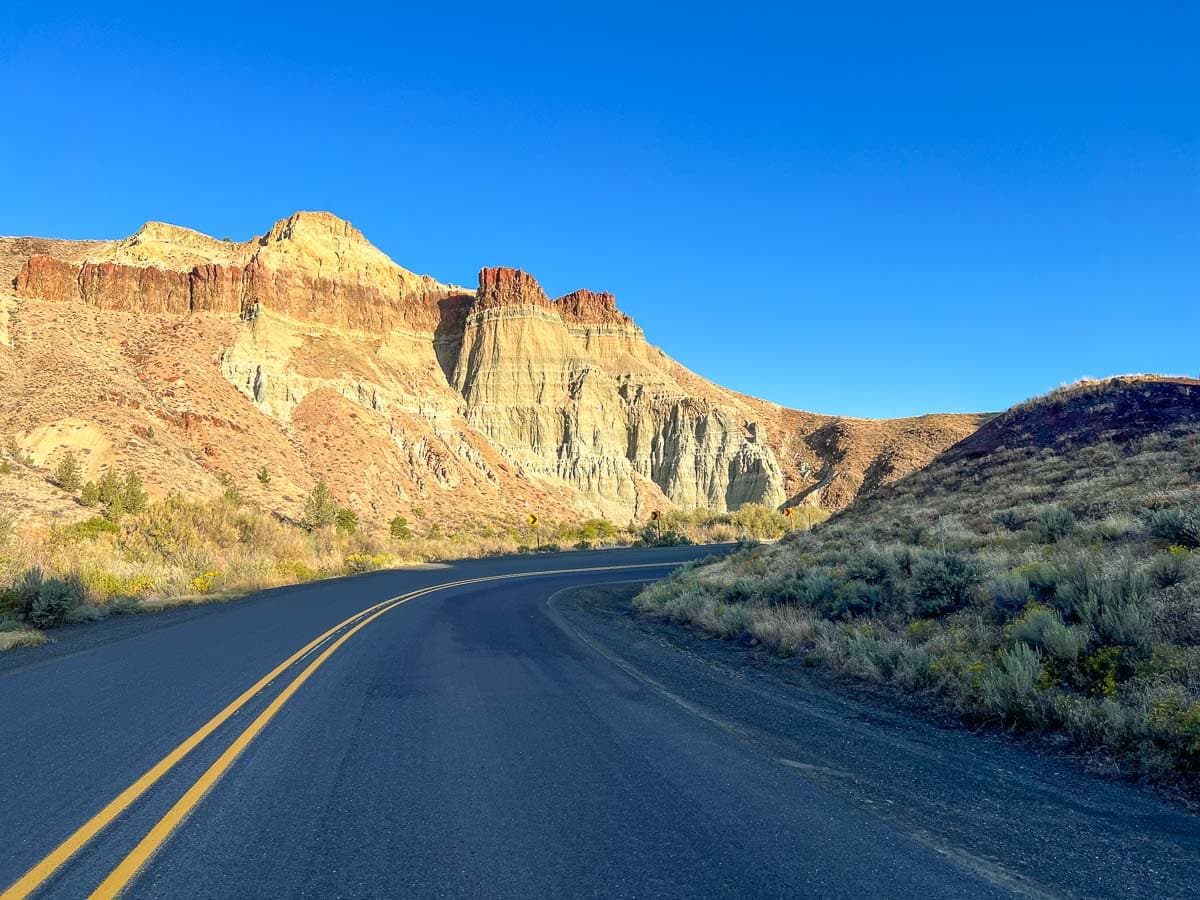
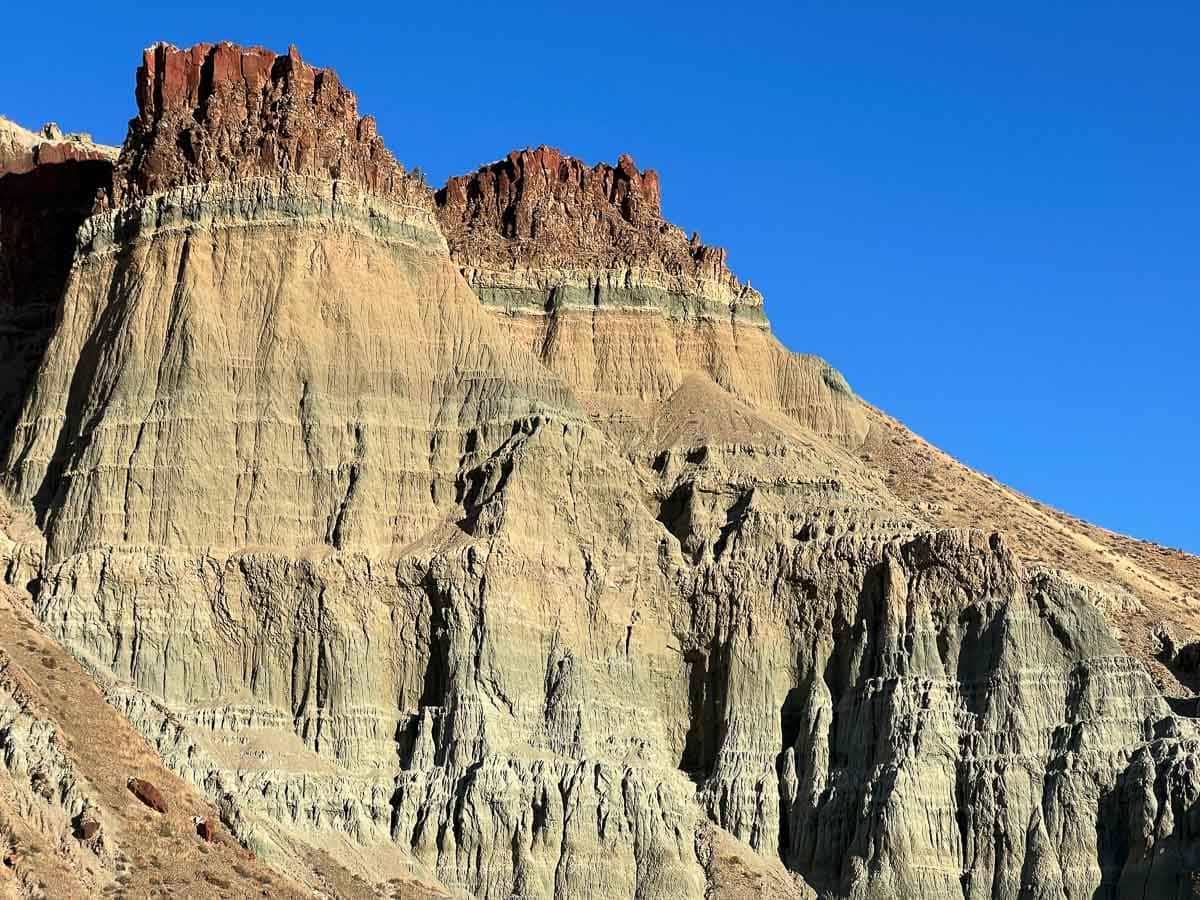
Cathedral Rock is yet another magnificent rock formation in the Sheep Rock Unit. It’s so remarkable that it’s its own little protected area among a swath of private land (refer to the map below to see what I mean).
It’s arguably the one rock that showcases how many geological layers are actually preserved in John Day Fossil Beds National Monument. Specifically, Cathedral Rock contains fossils from the Turtle Cove Assemblage through the Kimberly.
You can clearly see the various layers, many of which have their own distinctive colors. Roadside pullouts allow you to take a closer look at this rather amazing geological feature.
10. Stroll Back in Time on the Flood of Fire and Story in Stone Trails
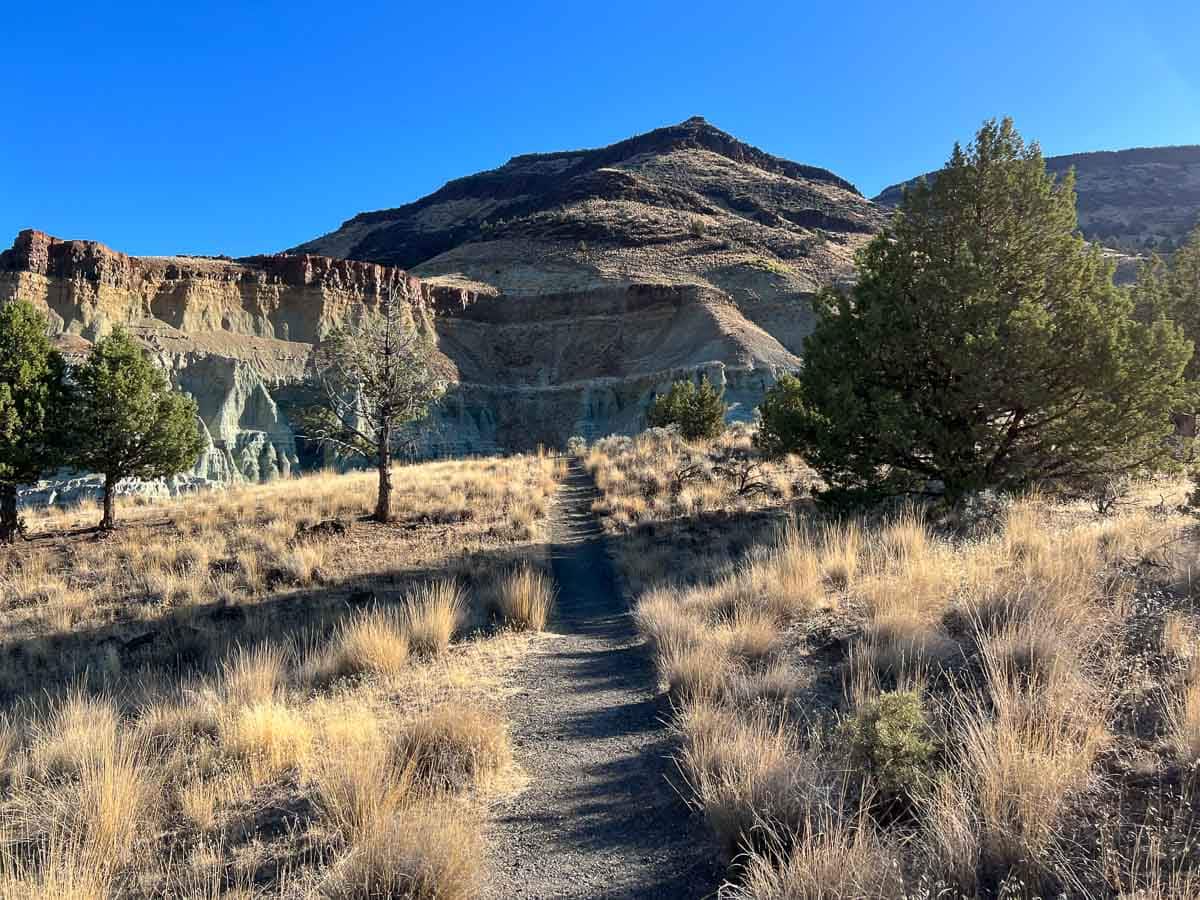
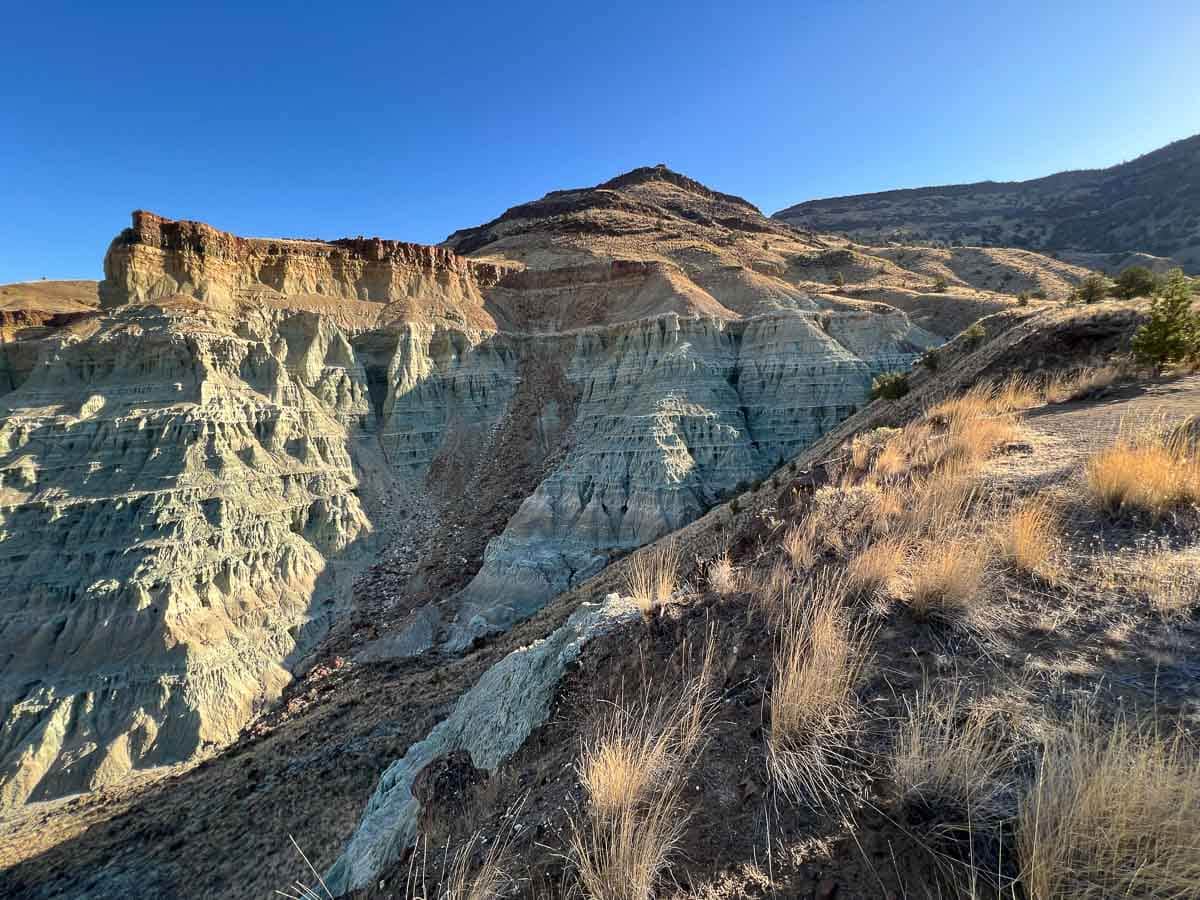
Both situated in the Foree Area of the Sheep Rock Unit, the Flood of Fire Trail (0.4 miles roundtrip, images above) and Story in Stone Trail (0.3 miles roundtrip, images below) take you through an ancient geological landscape.
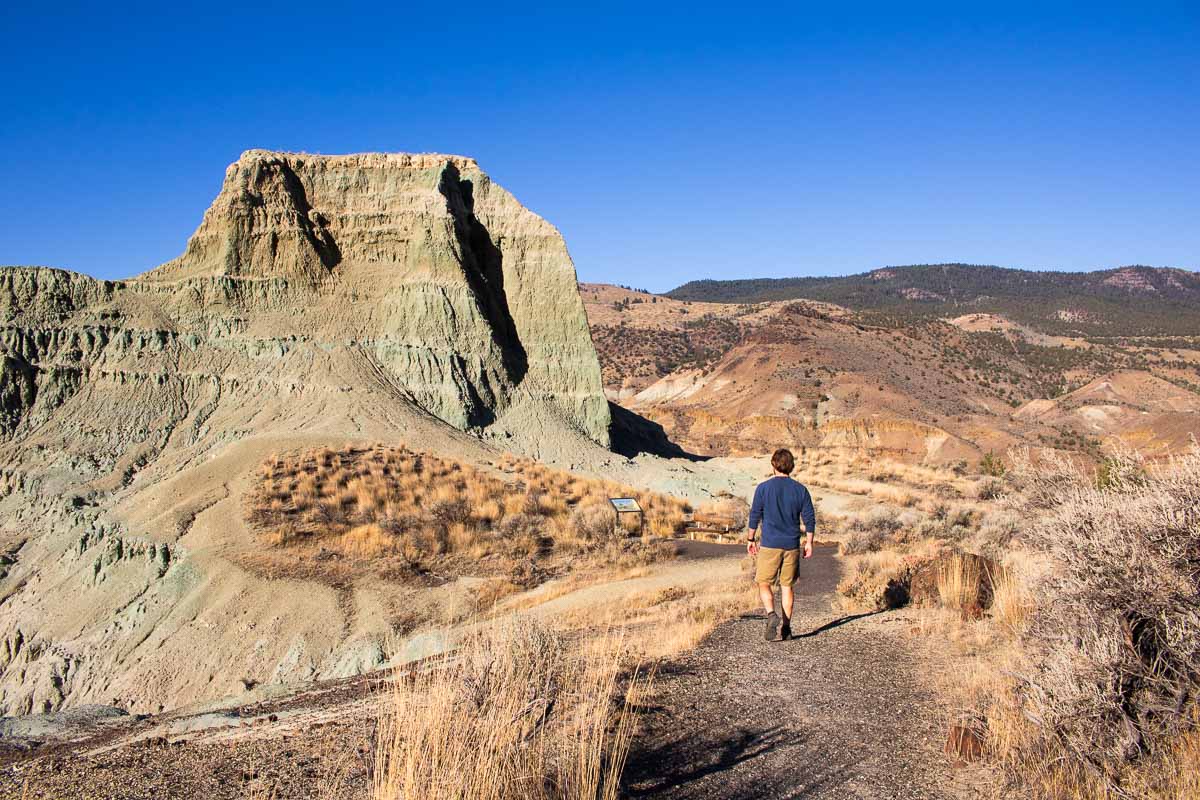
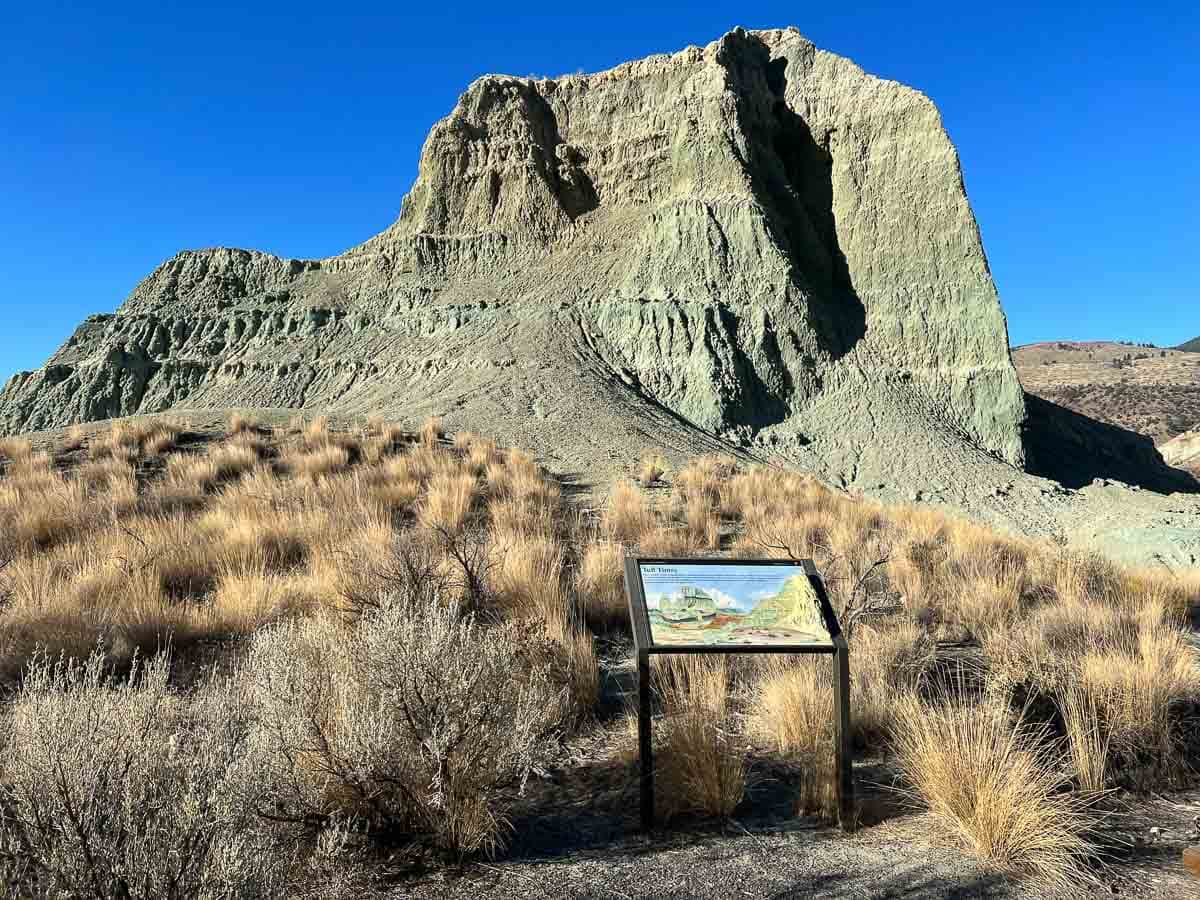
They both start at the Foree parking lot. The Flood of Fire Trail is an easy walk to a jaw-dropping overlook in front of a sheer cliff face. The mostly flat Story in Stone Trail runs toward and through striking pillars of blue-green claystone.
Map of Trails and Attractions in the Sheep Rock Unit (John Day Fossil Beds National Monument)
This map shows the location of all hiking trails and main attractions in the Sheep Rock Unit of John Day Fossil Beds National Monument.
